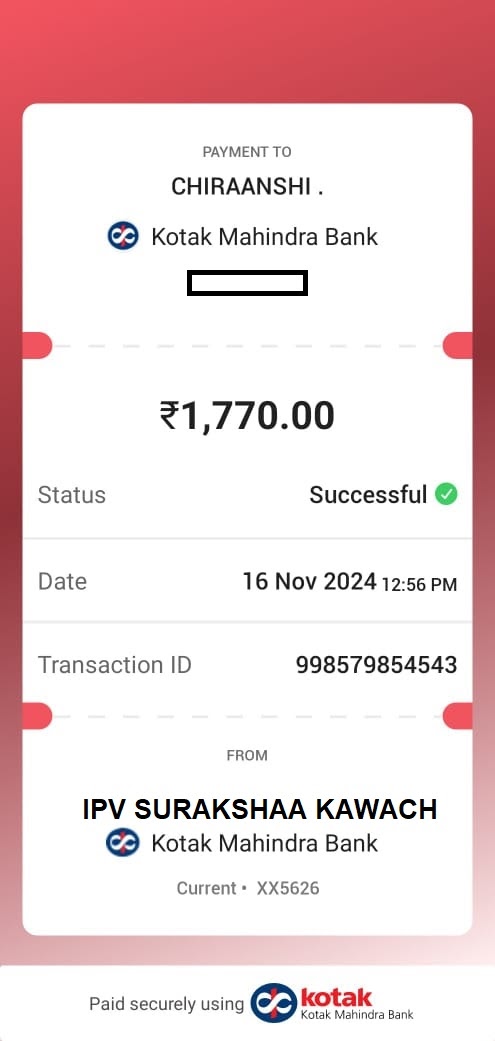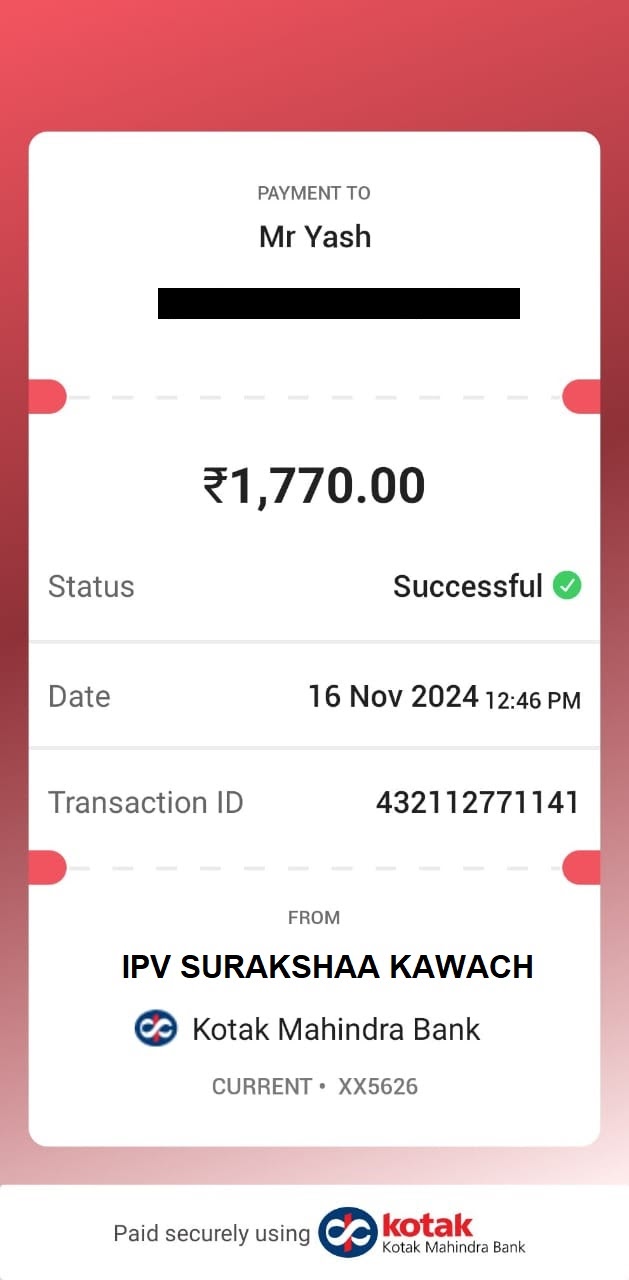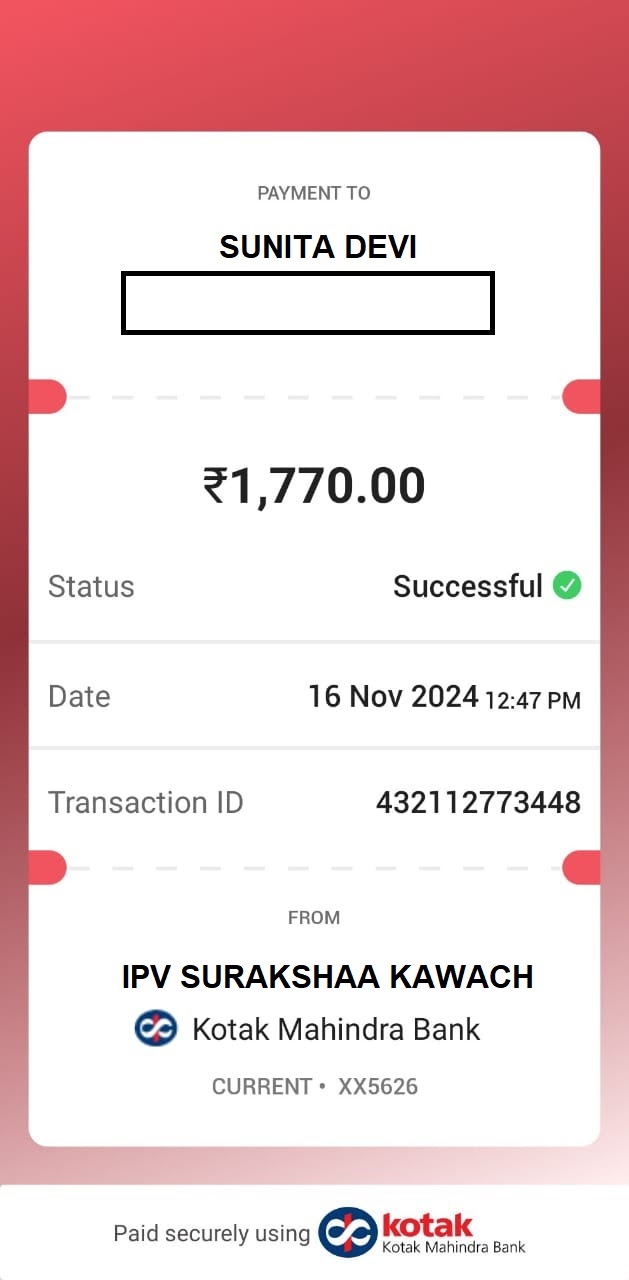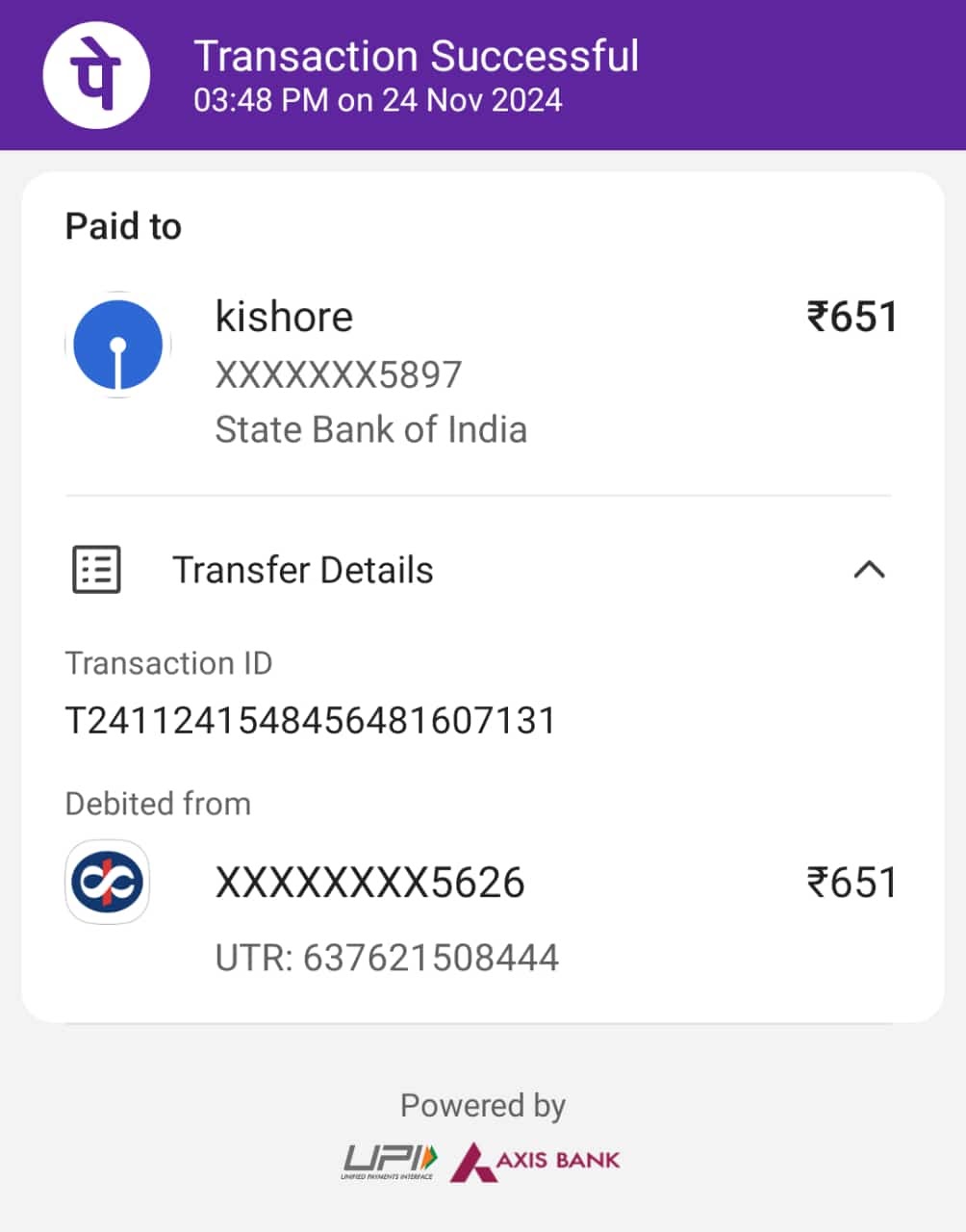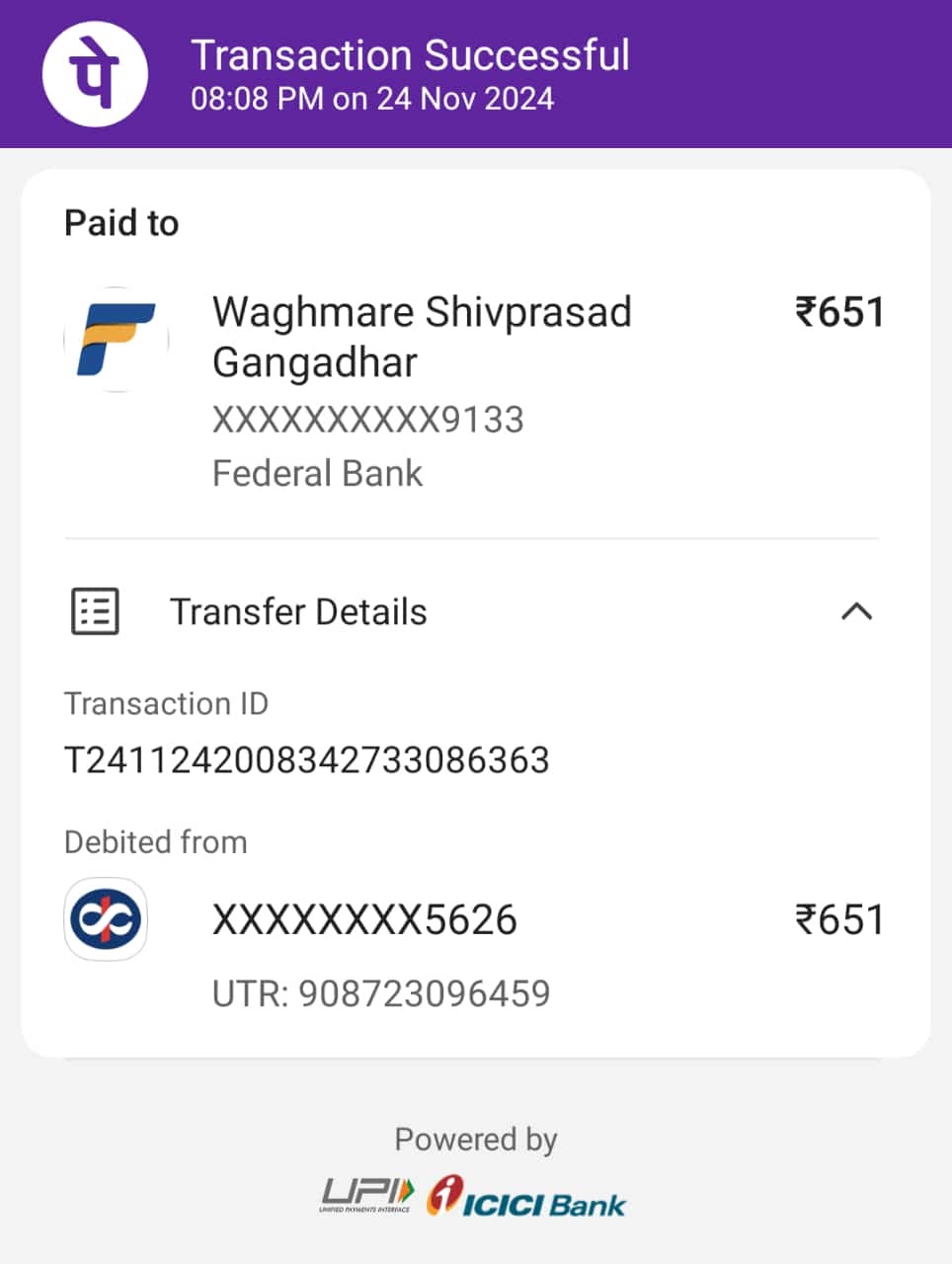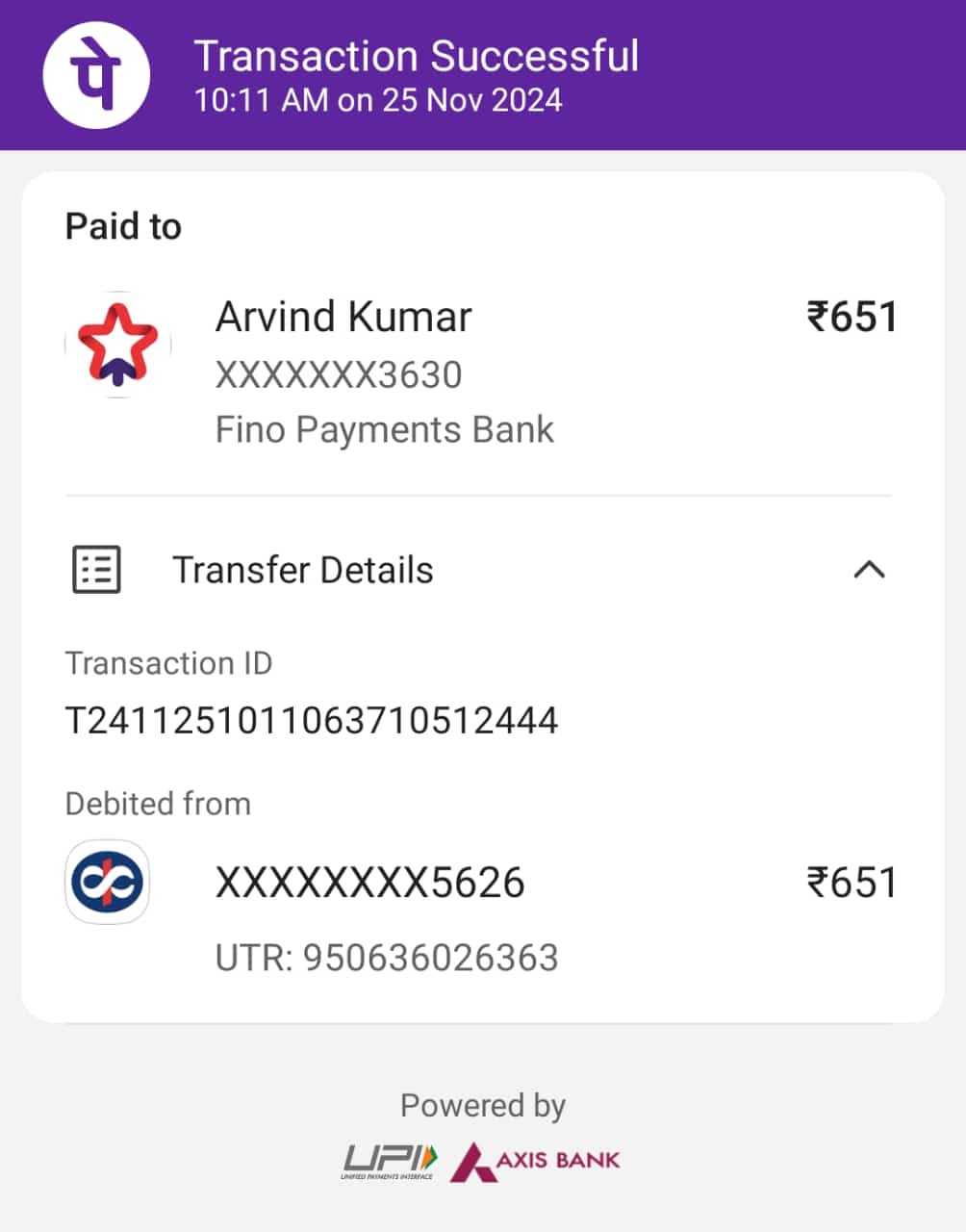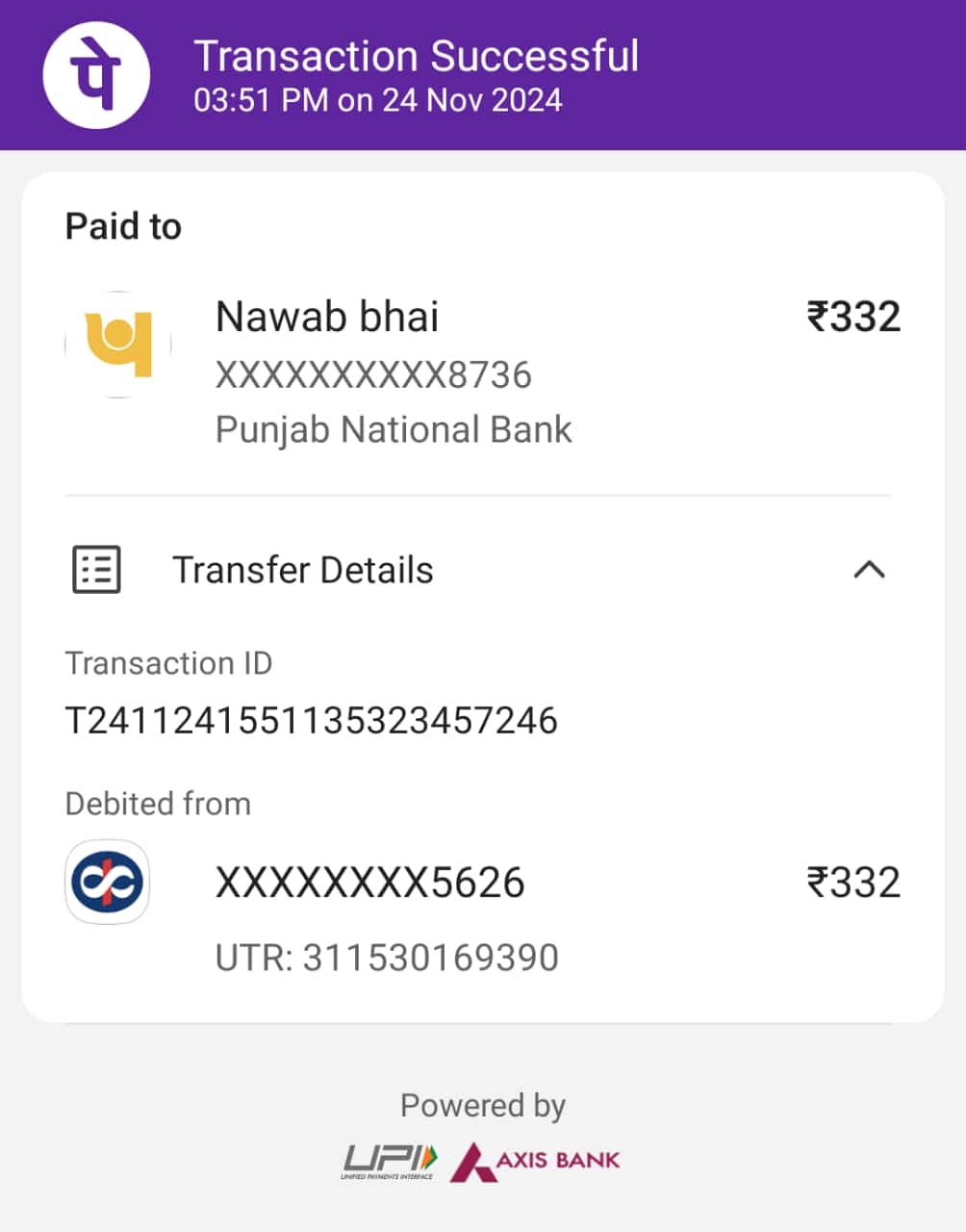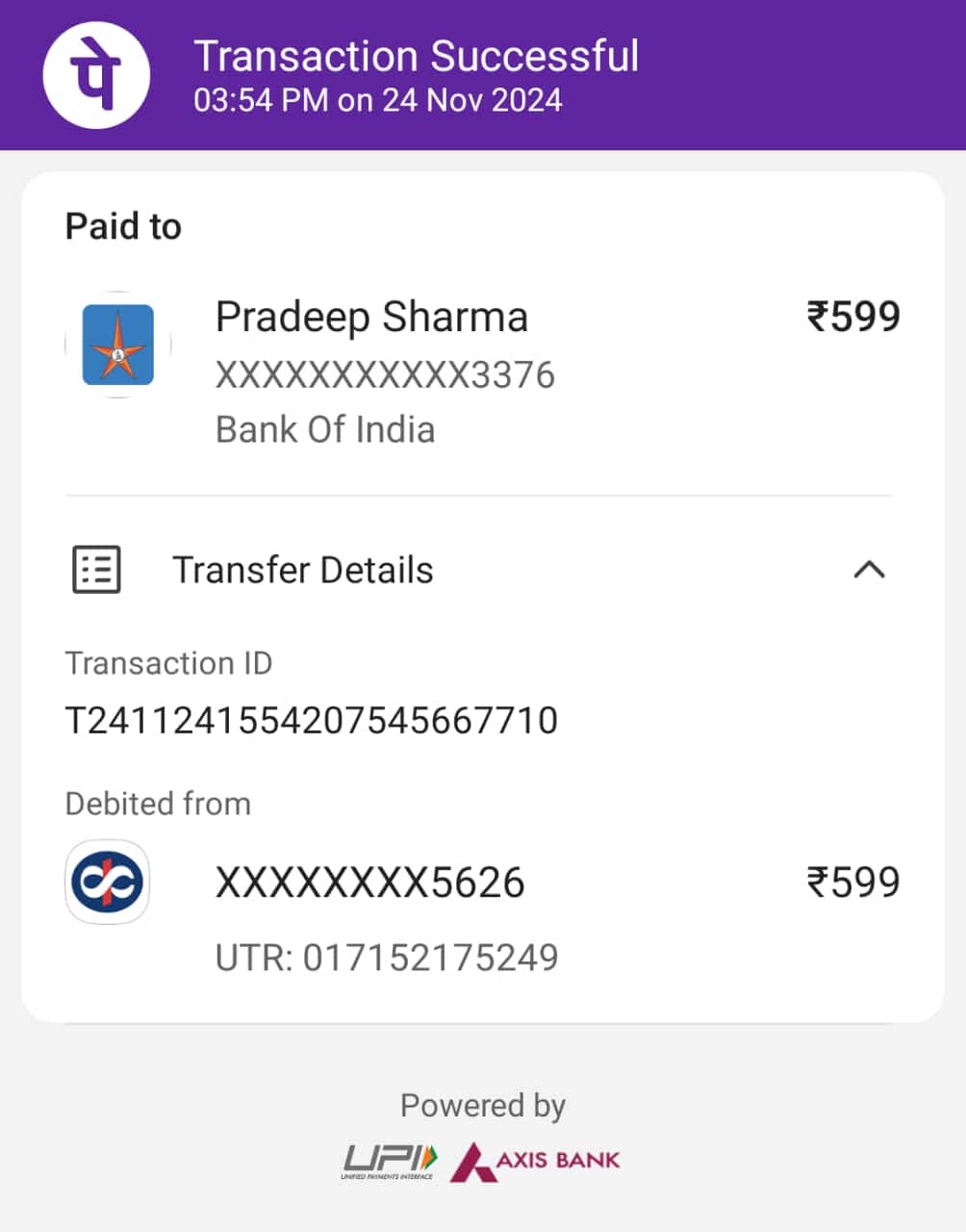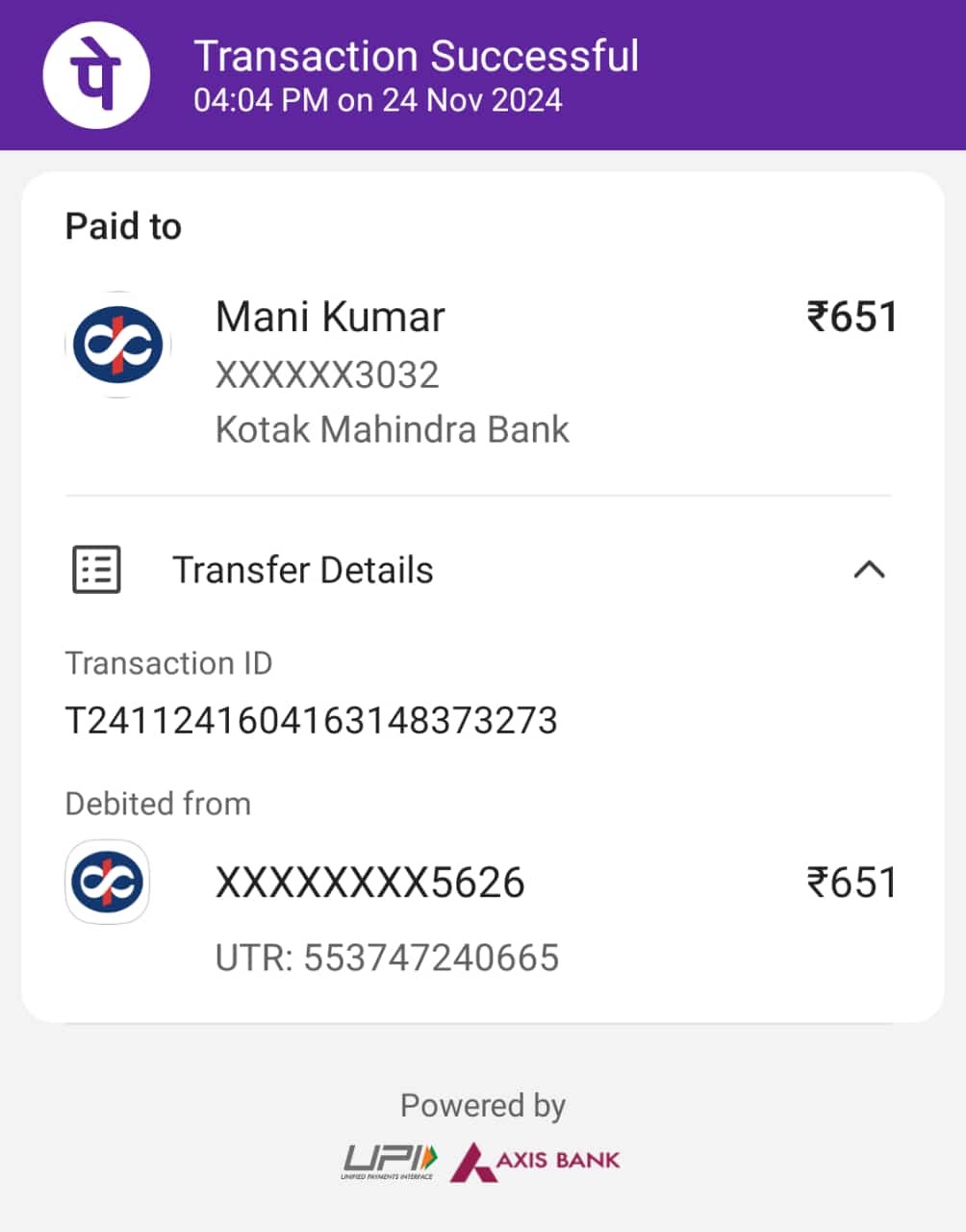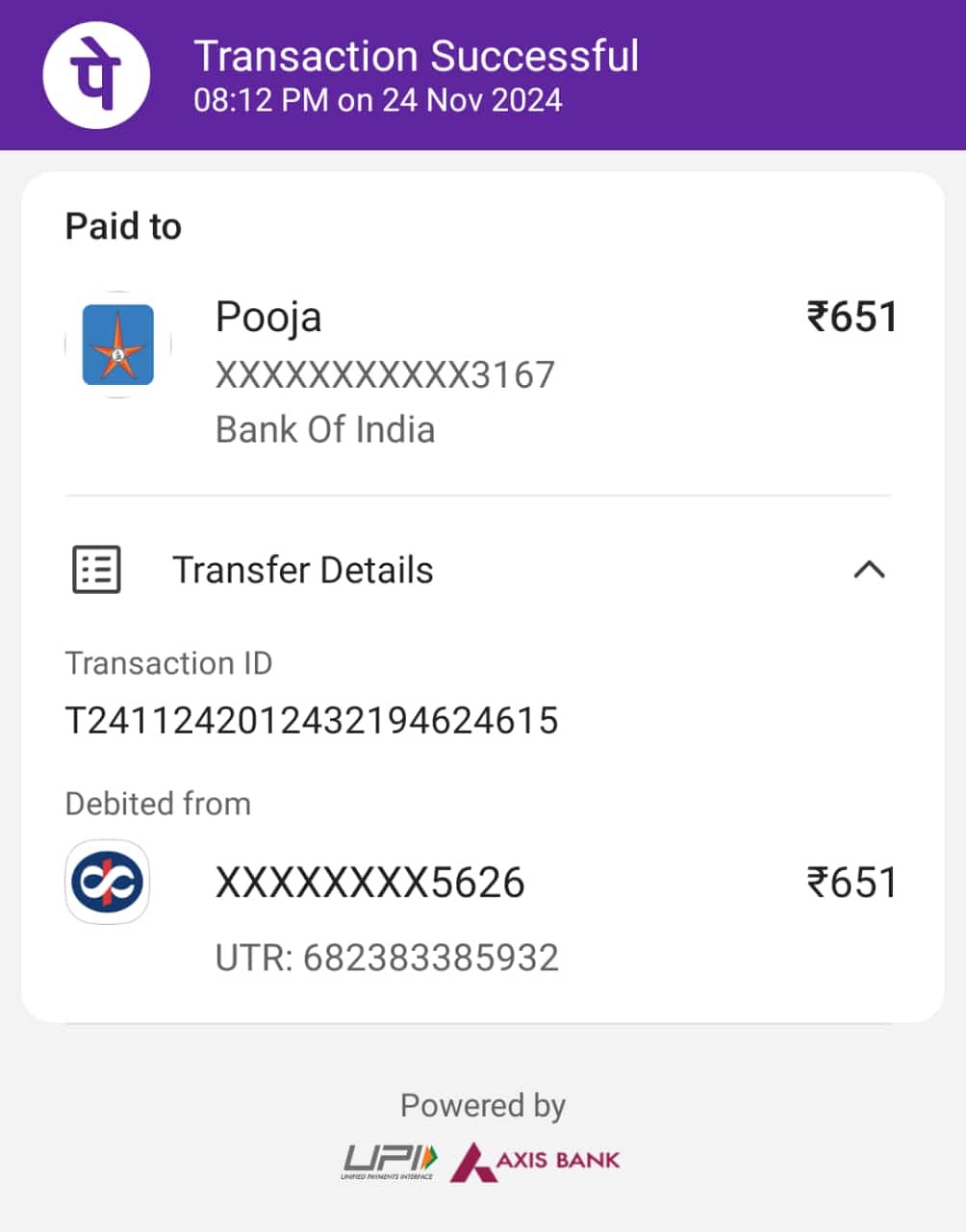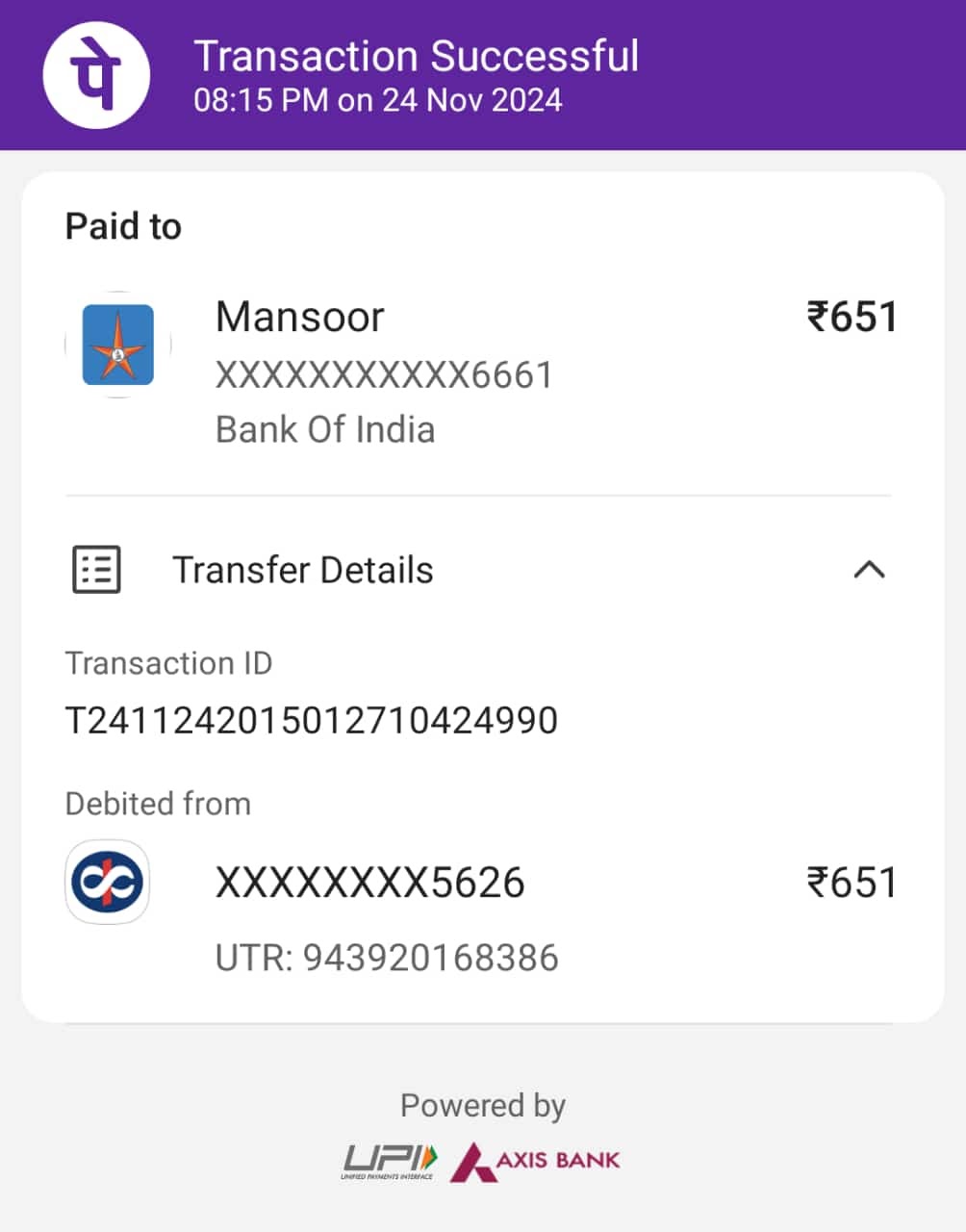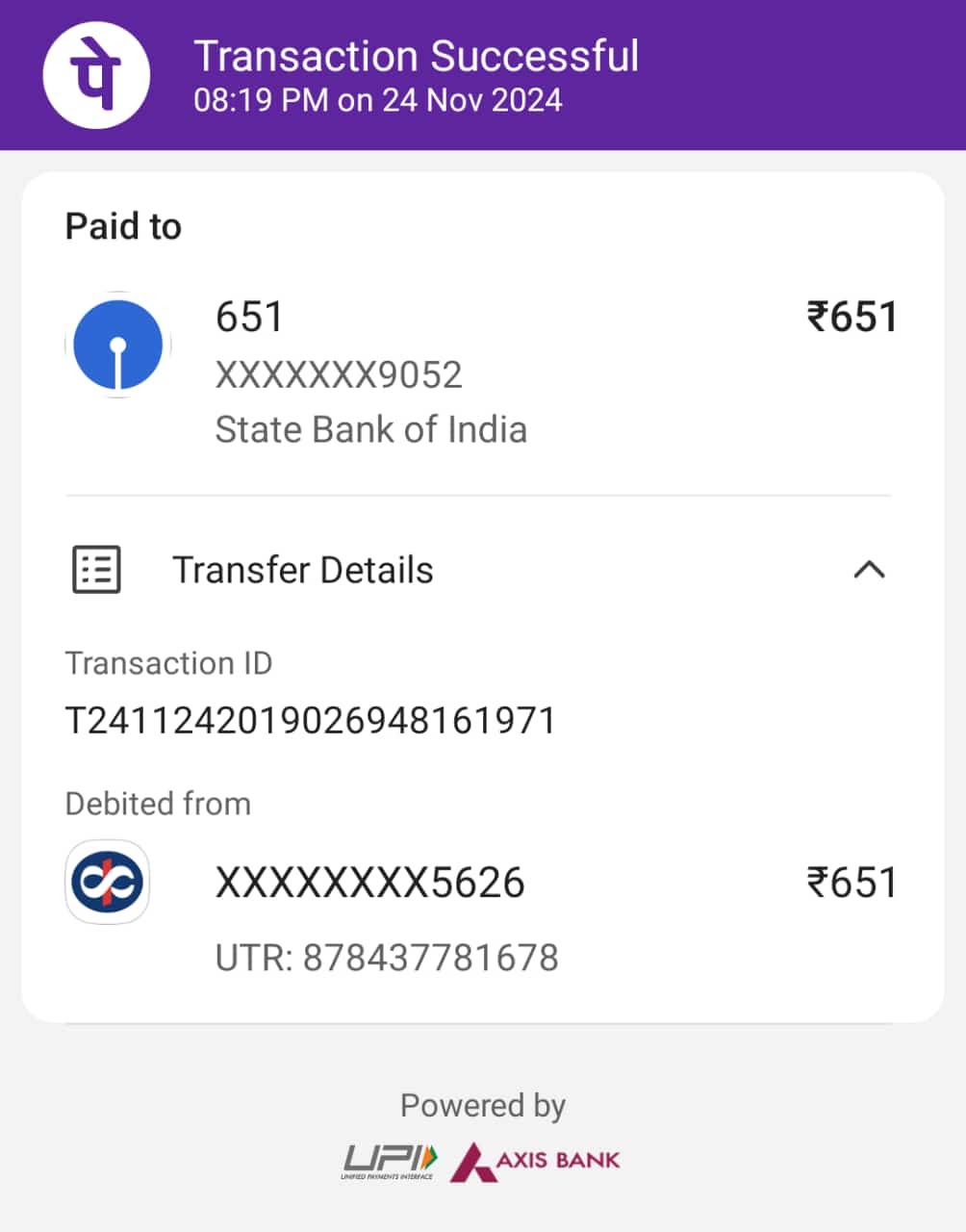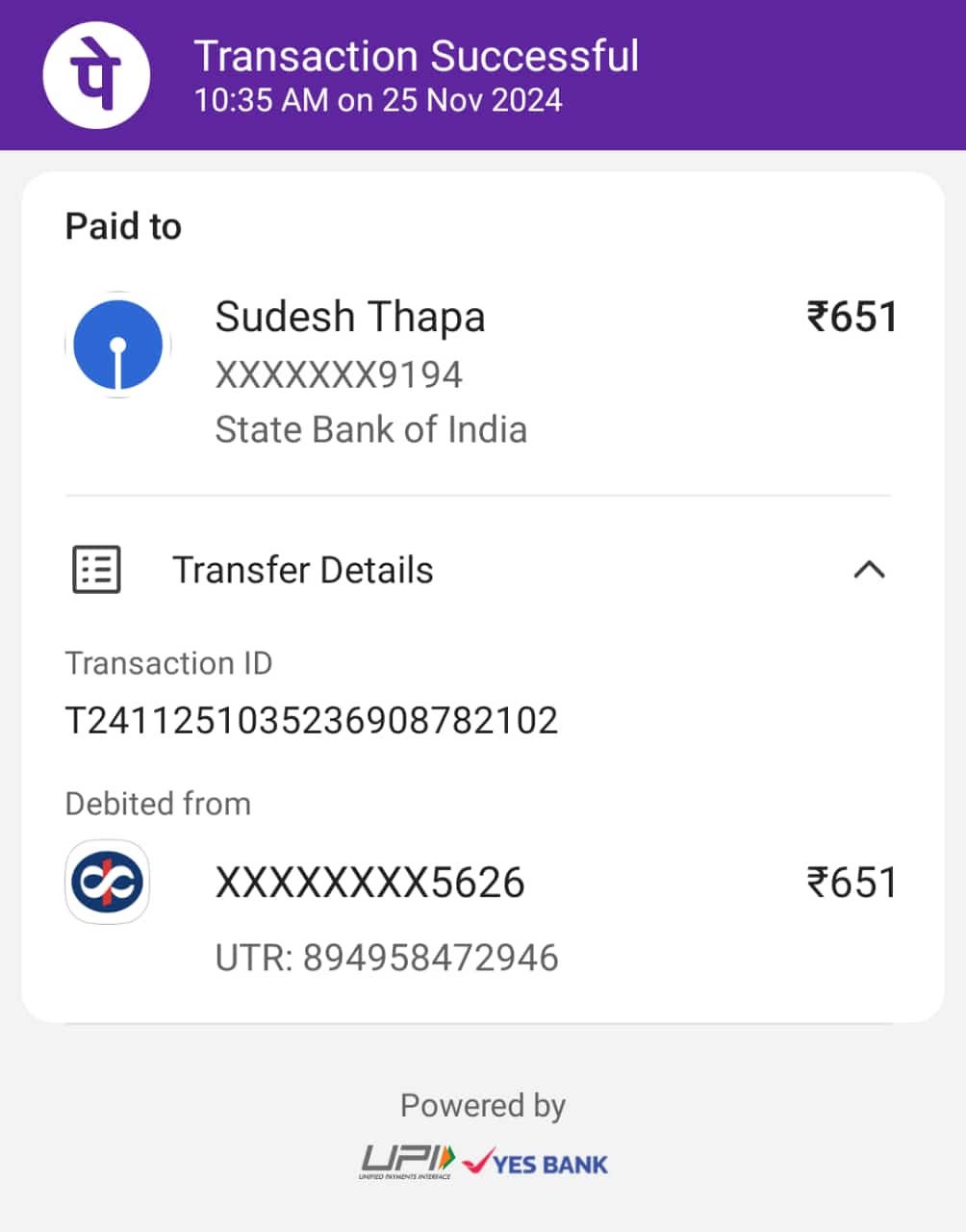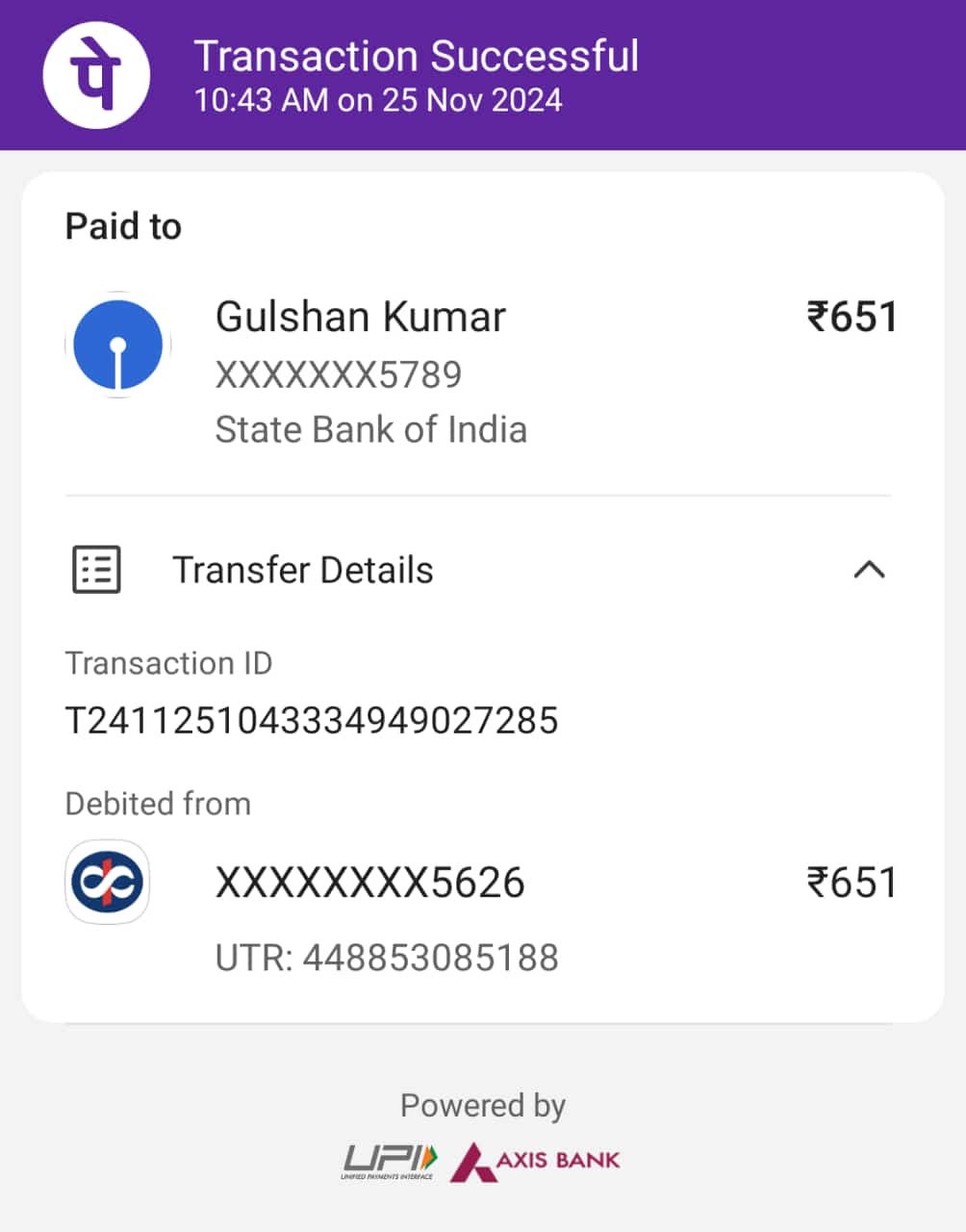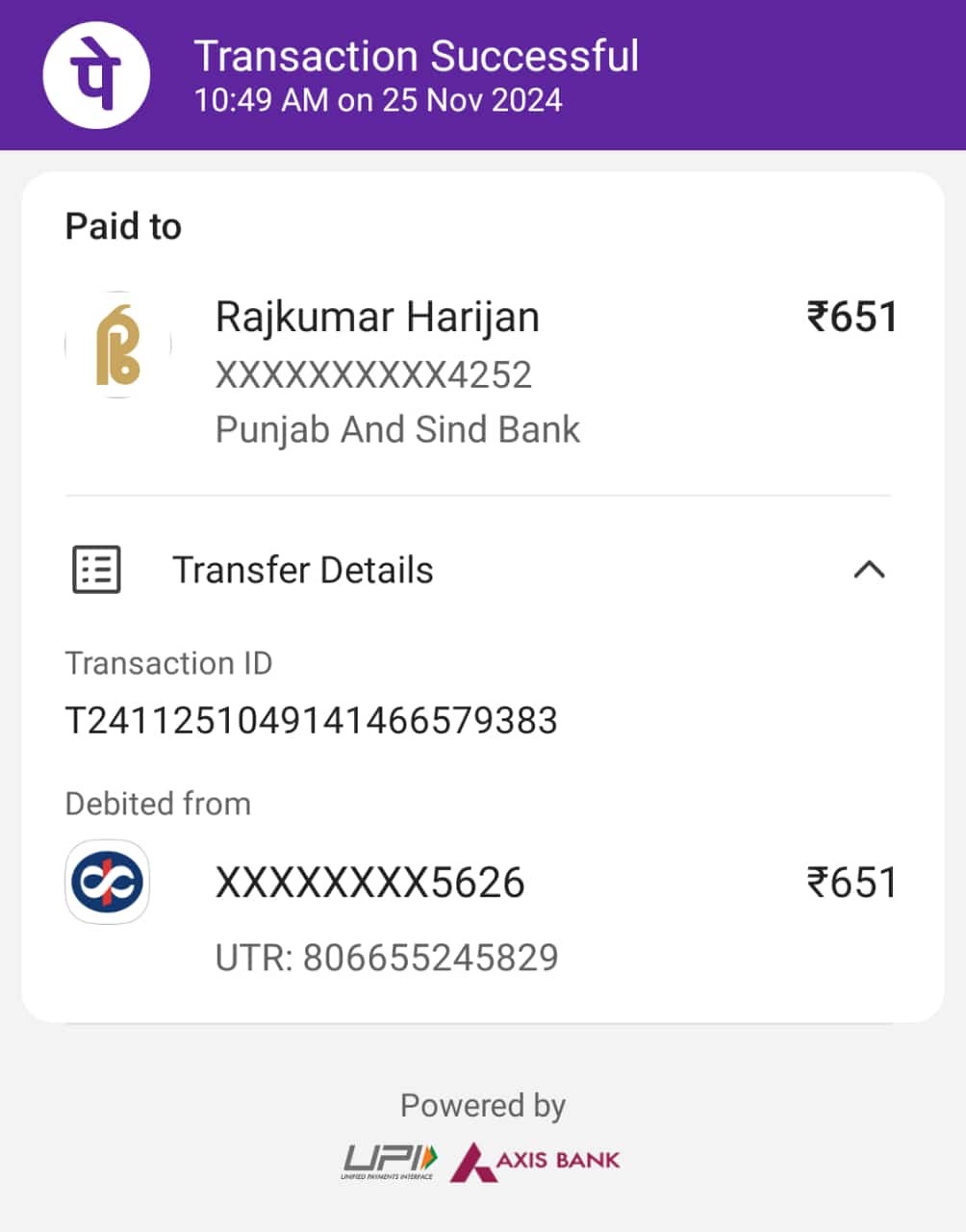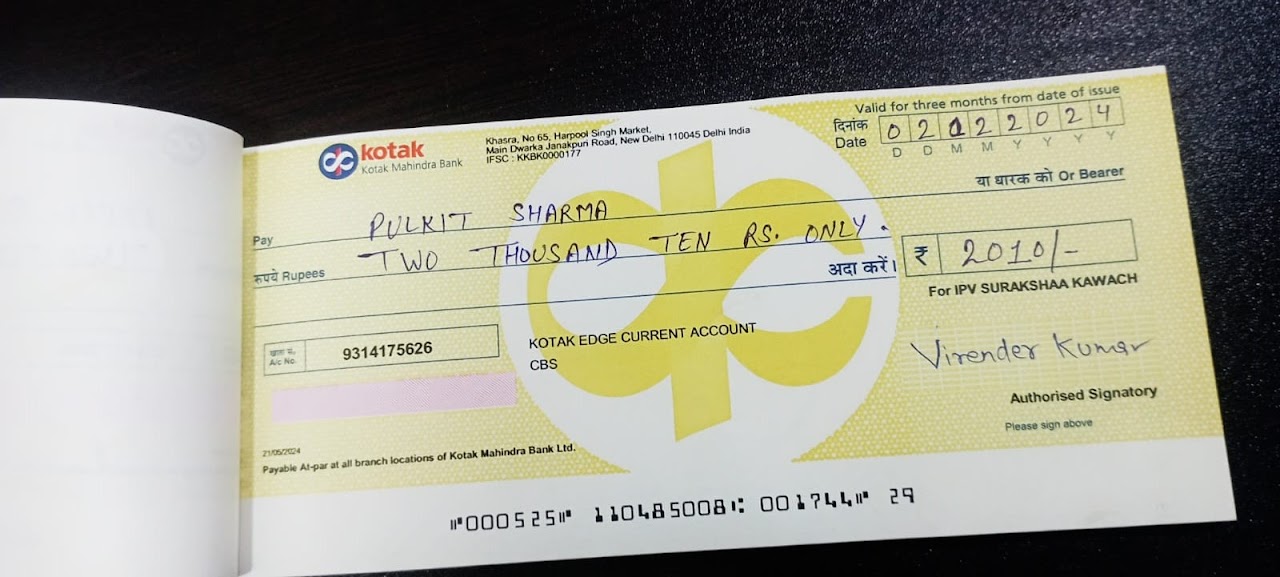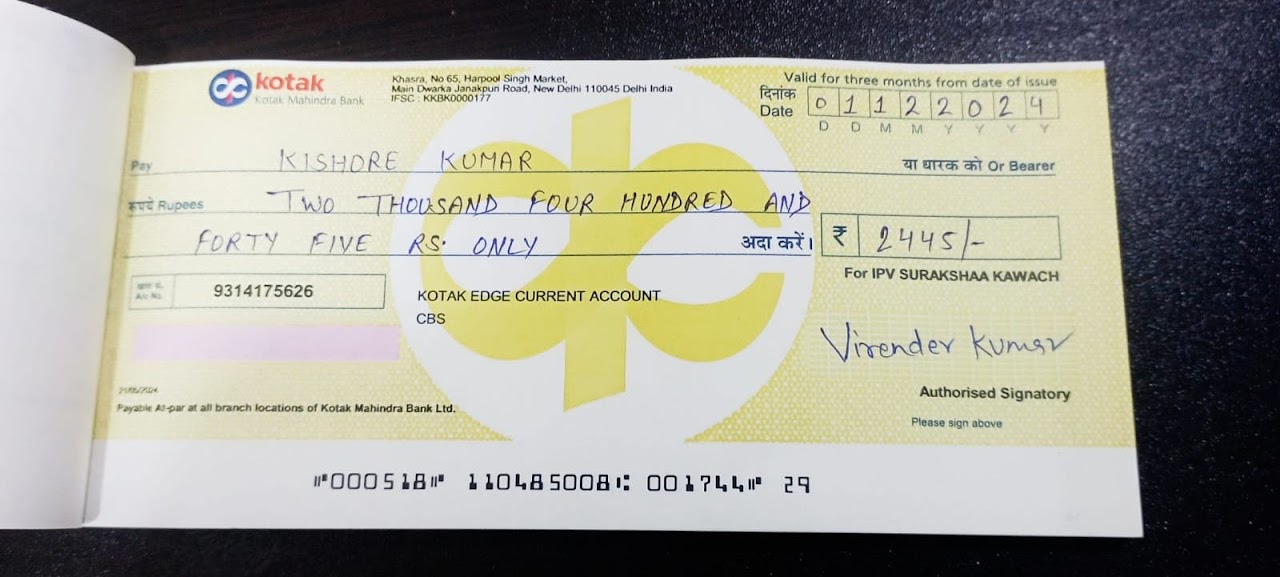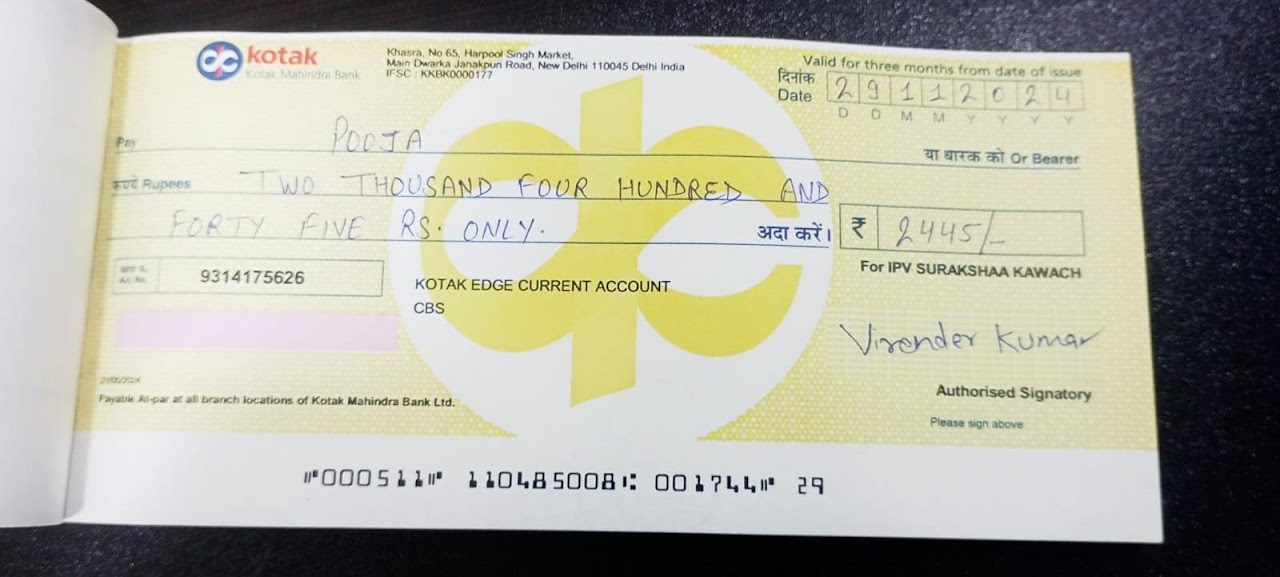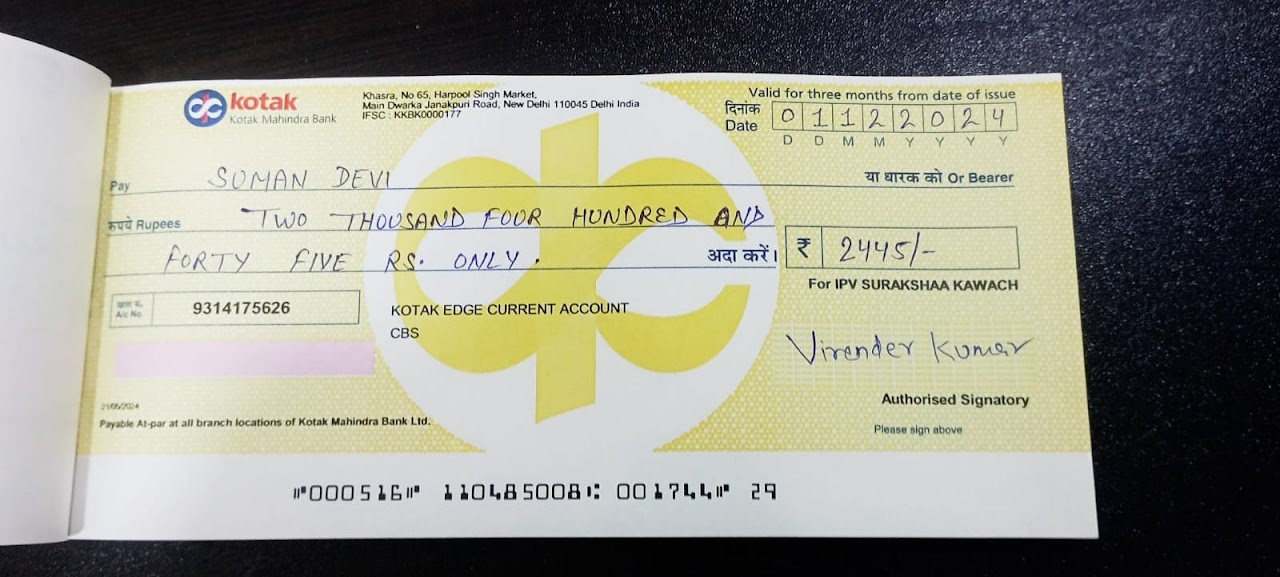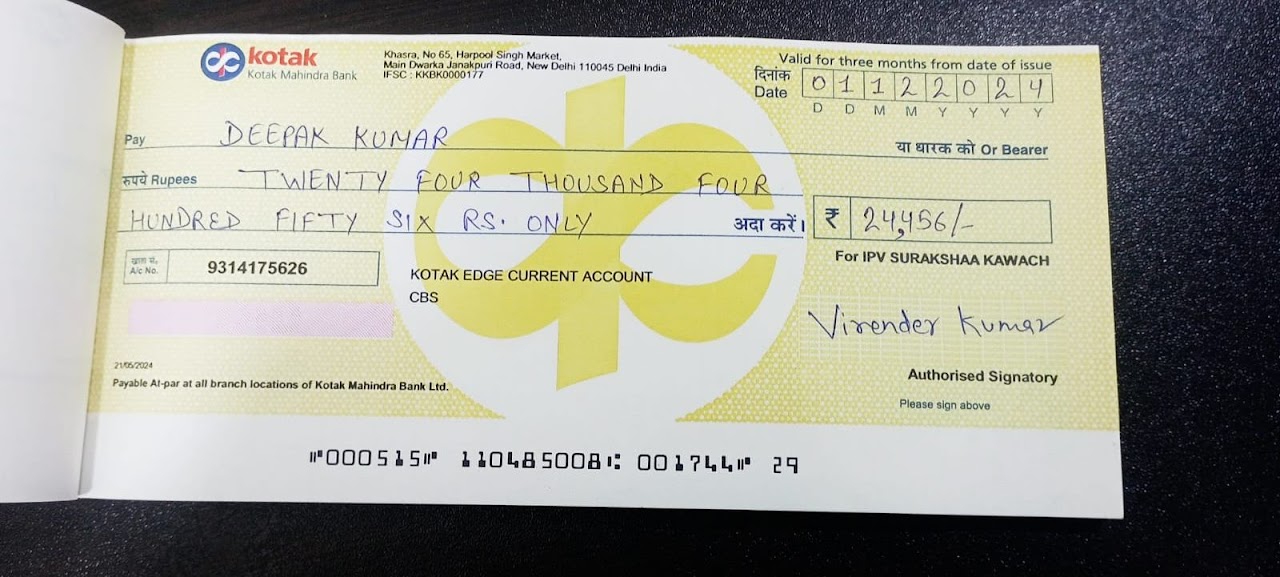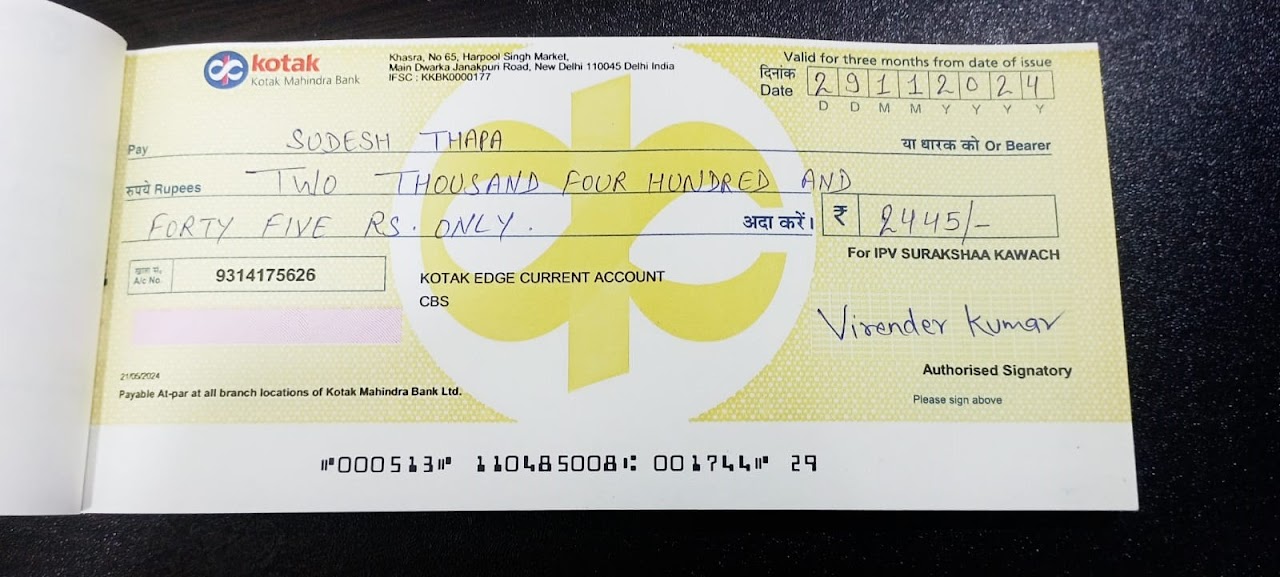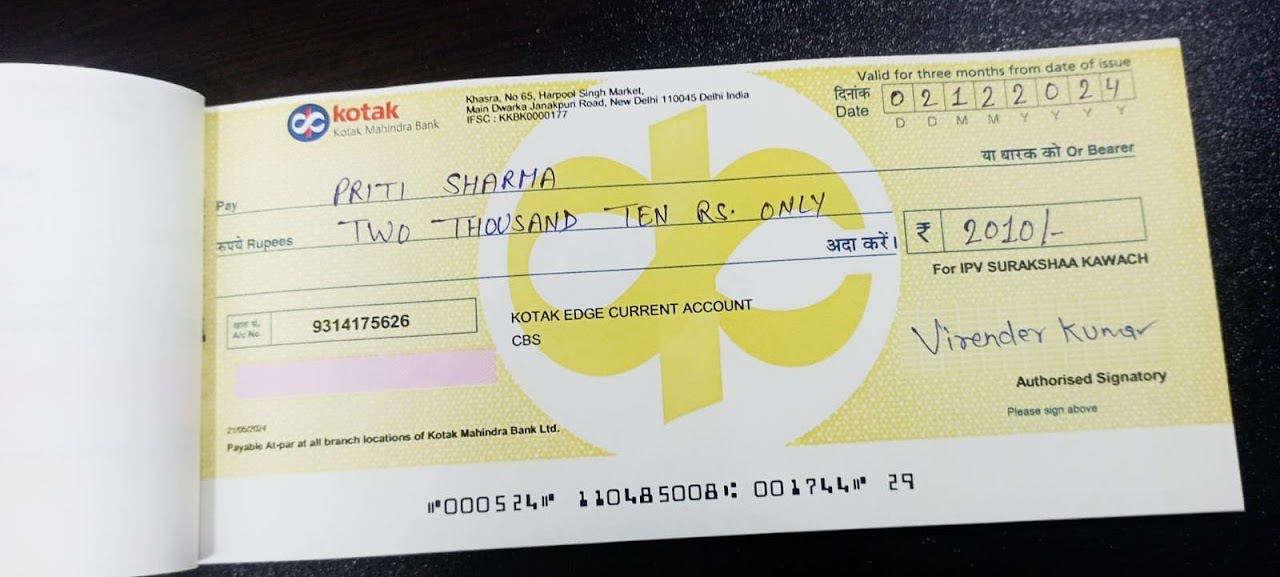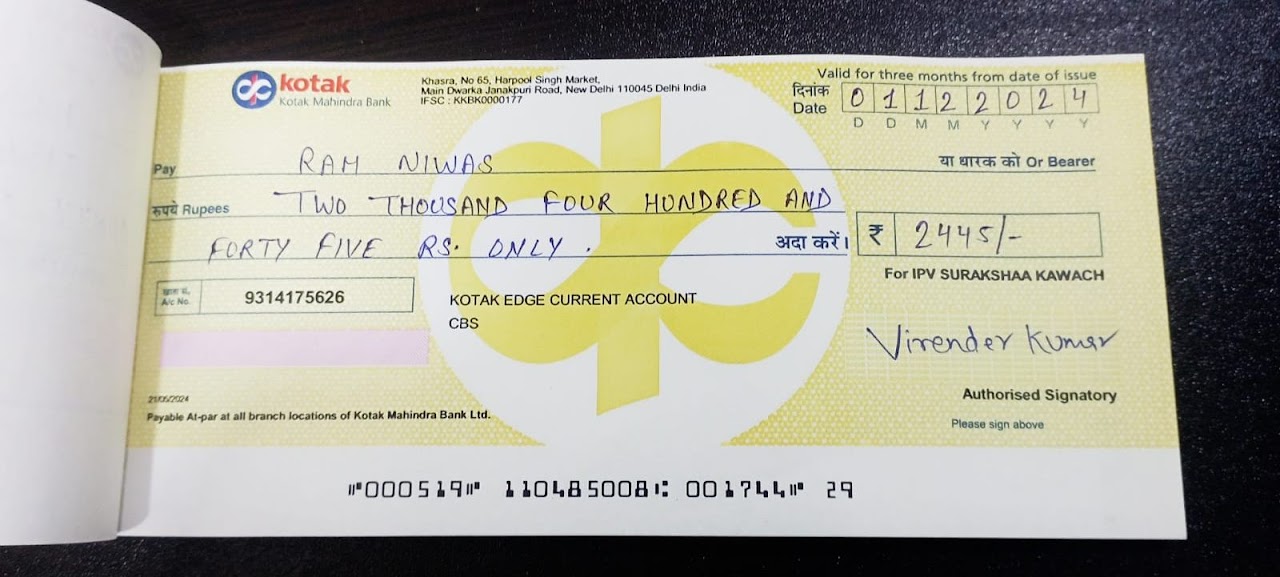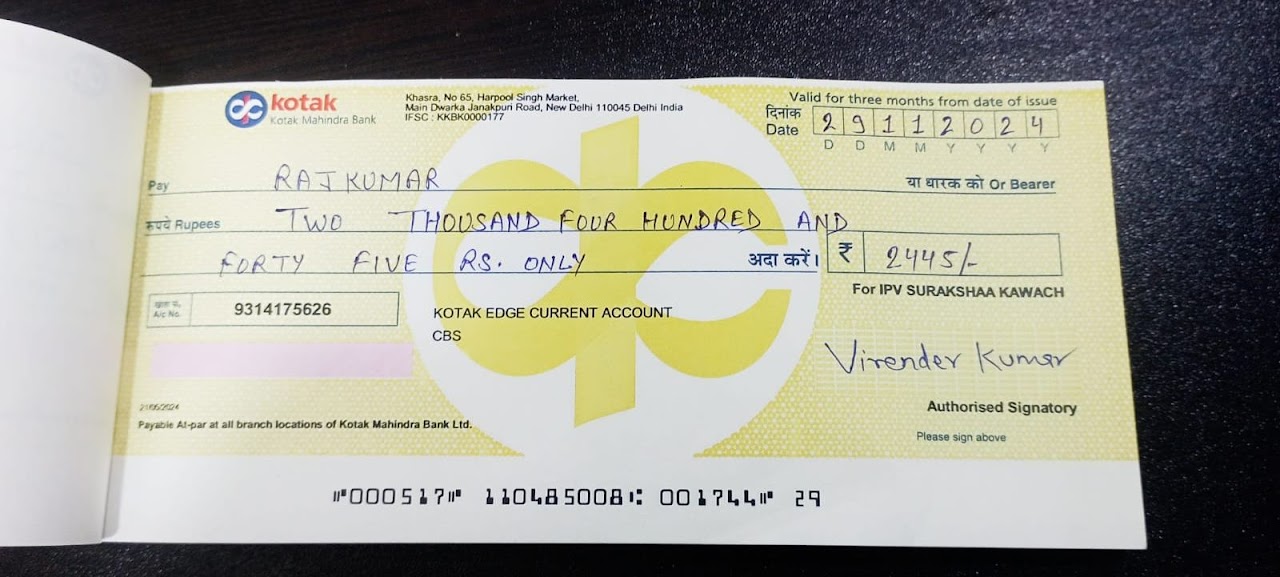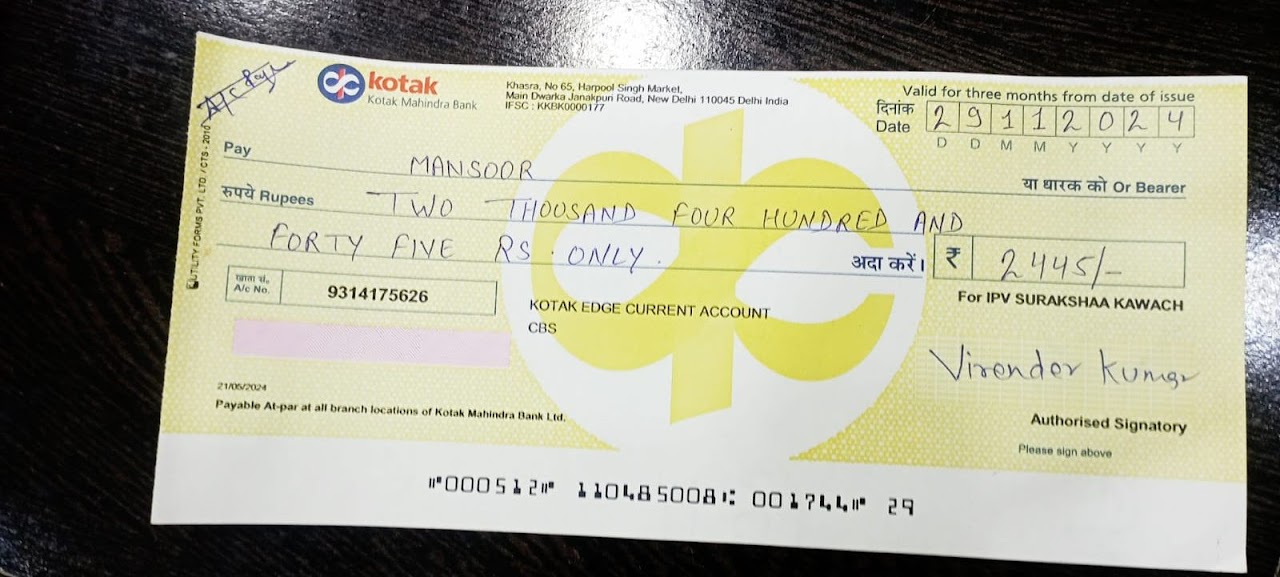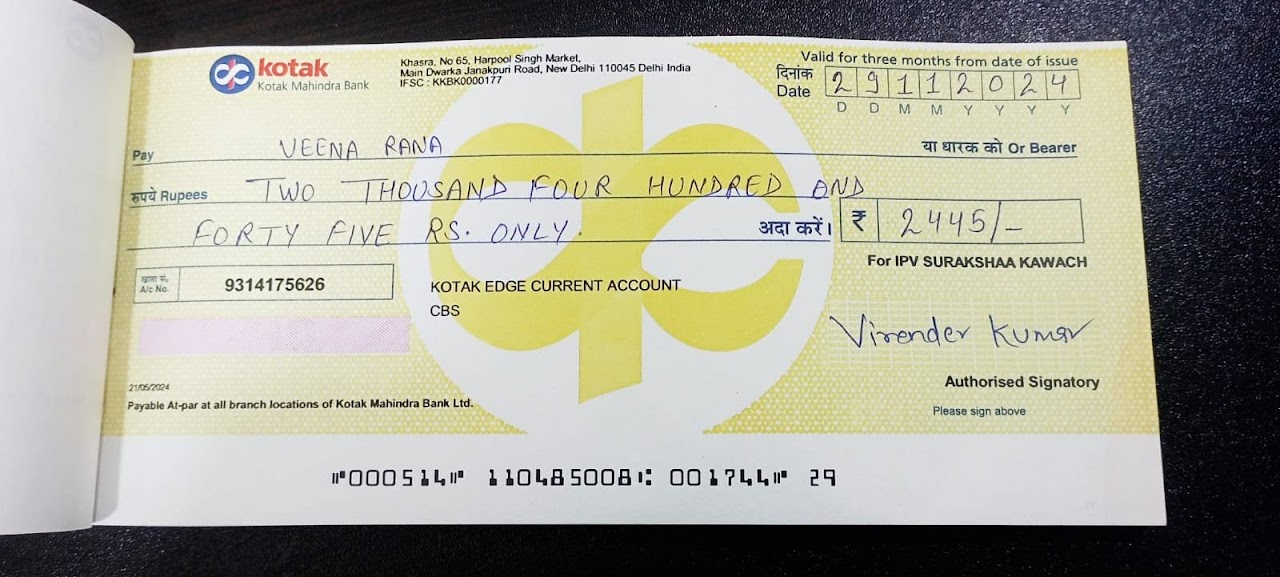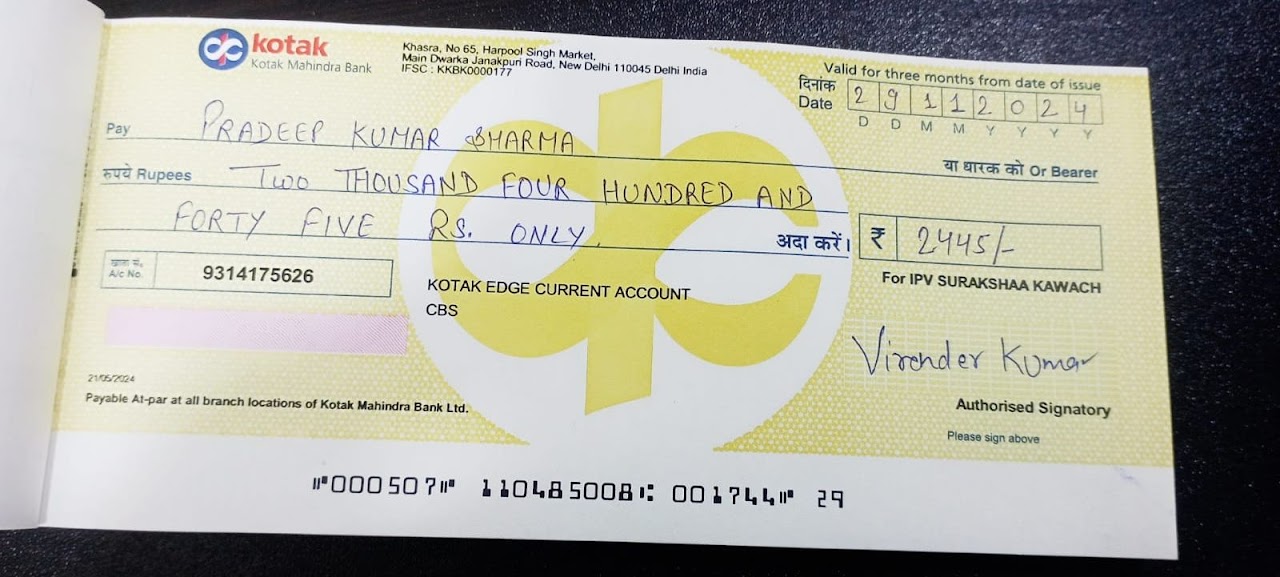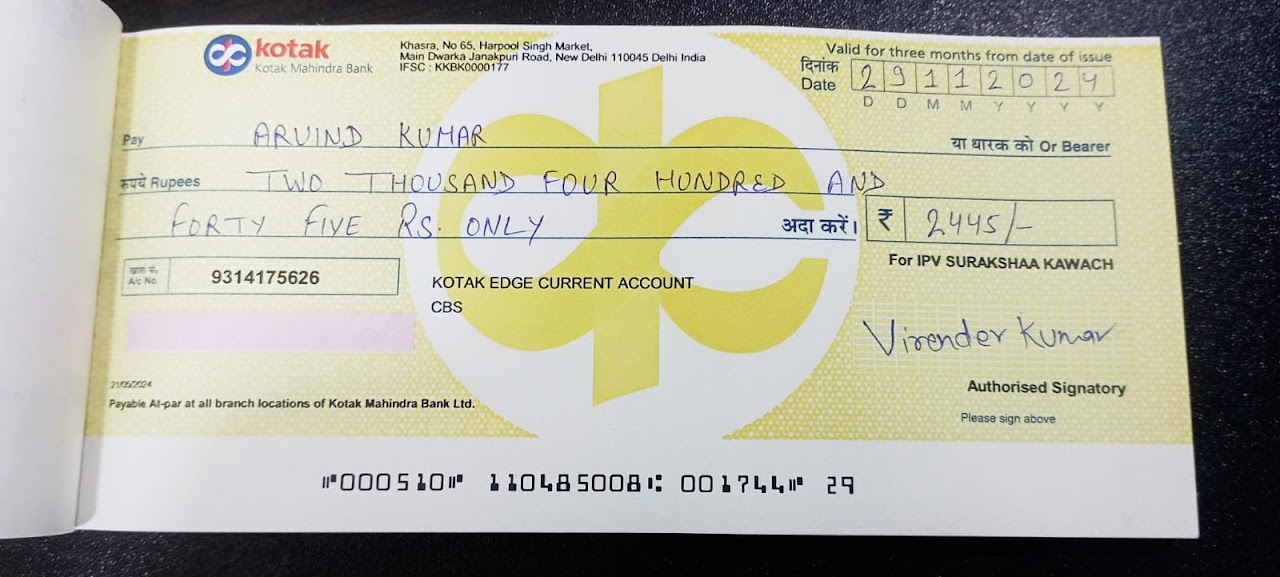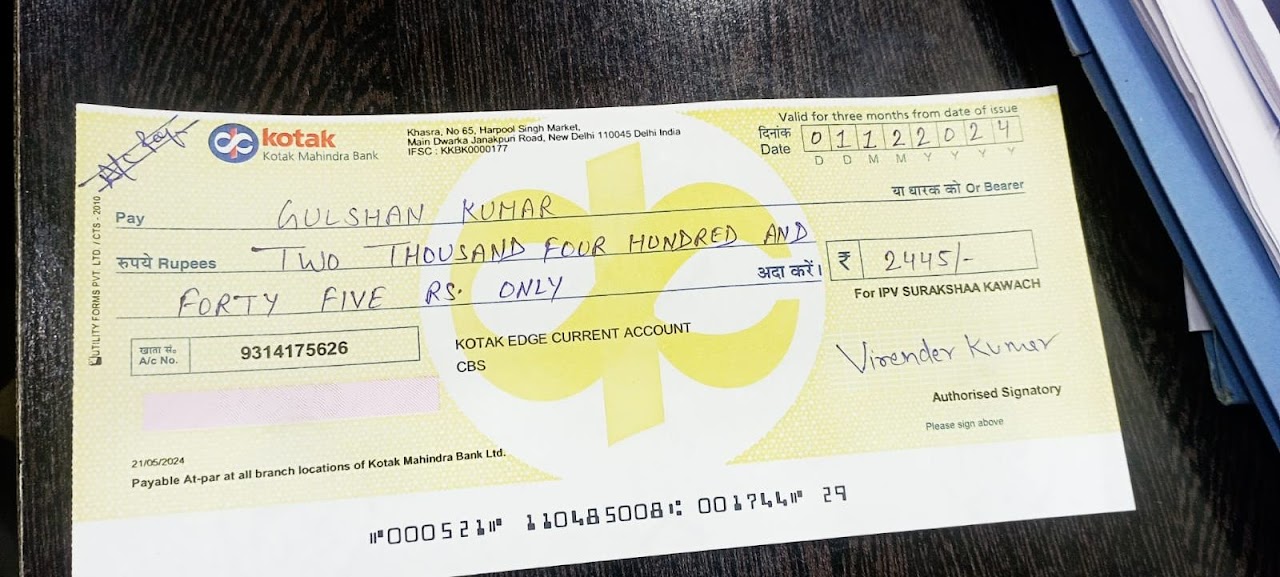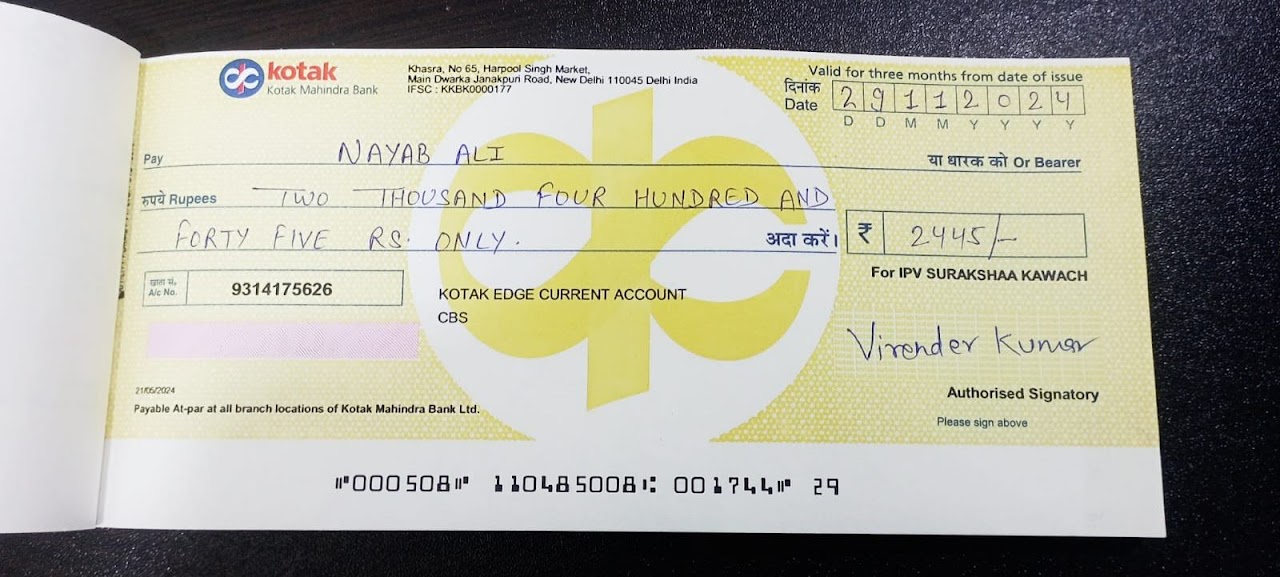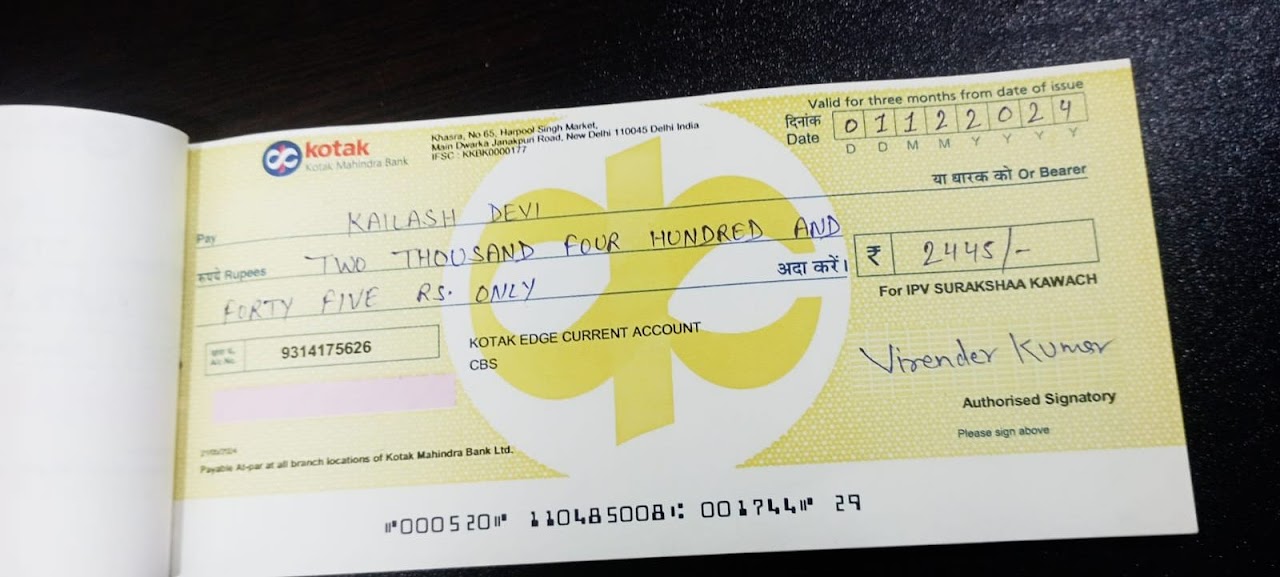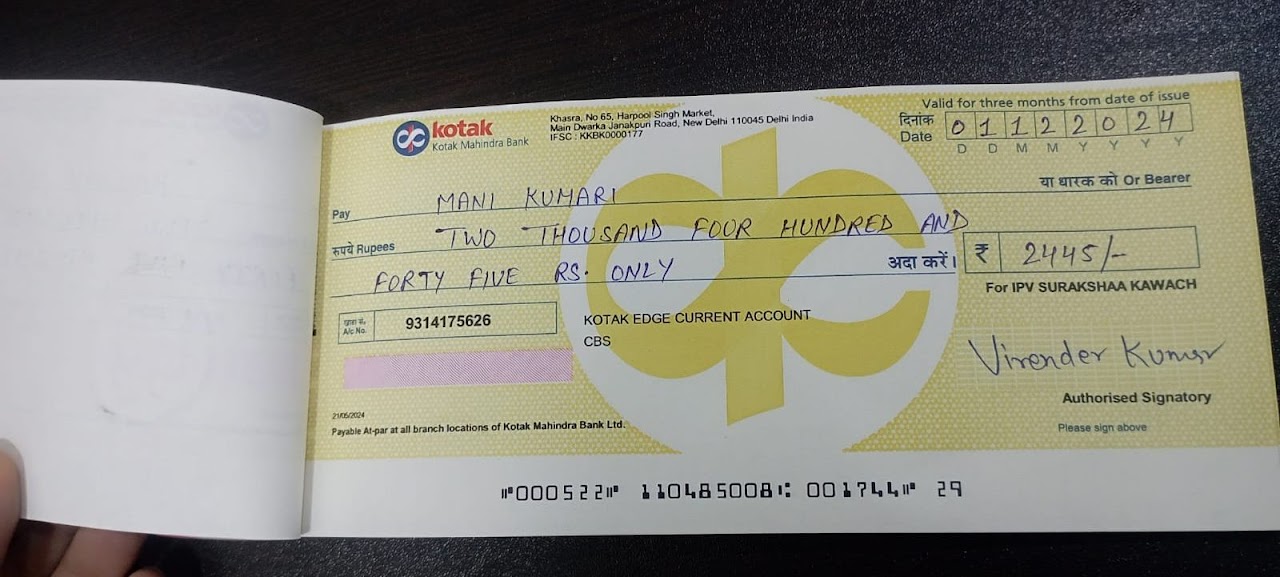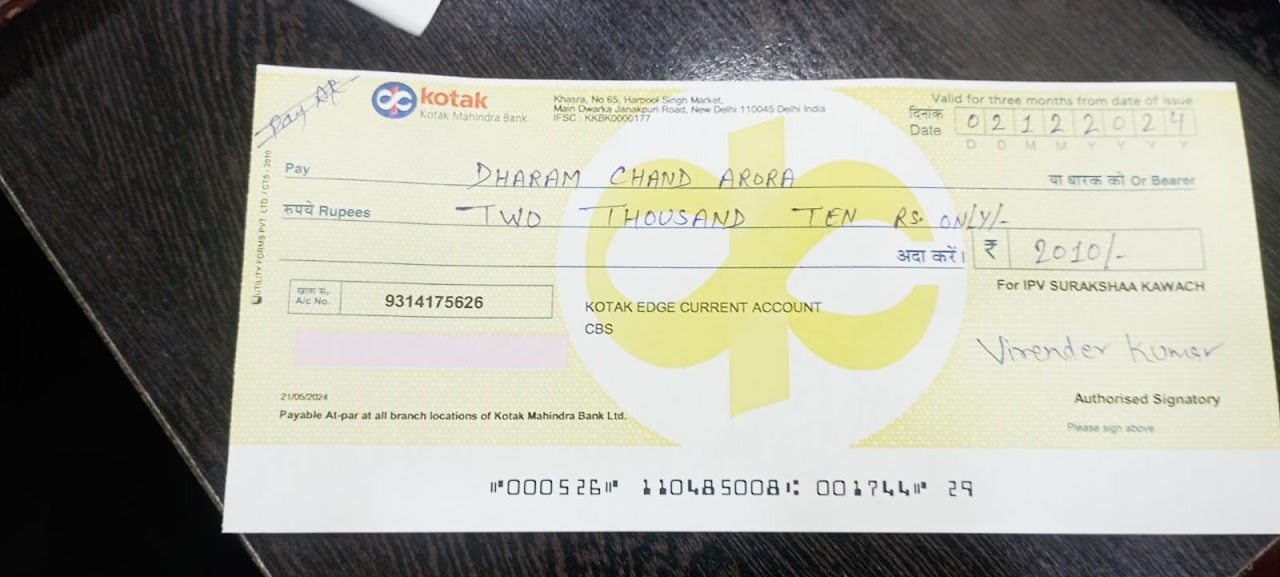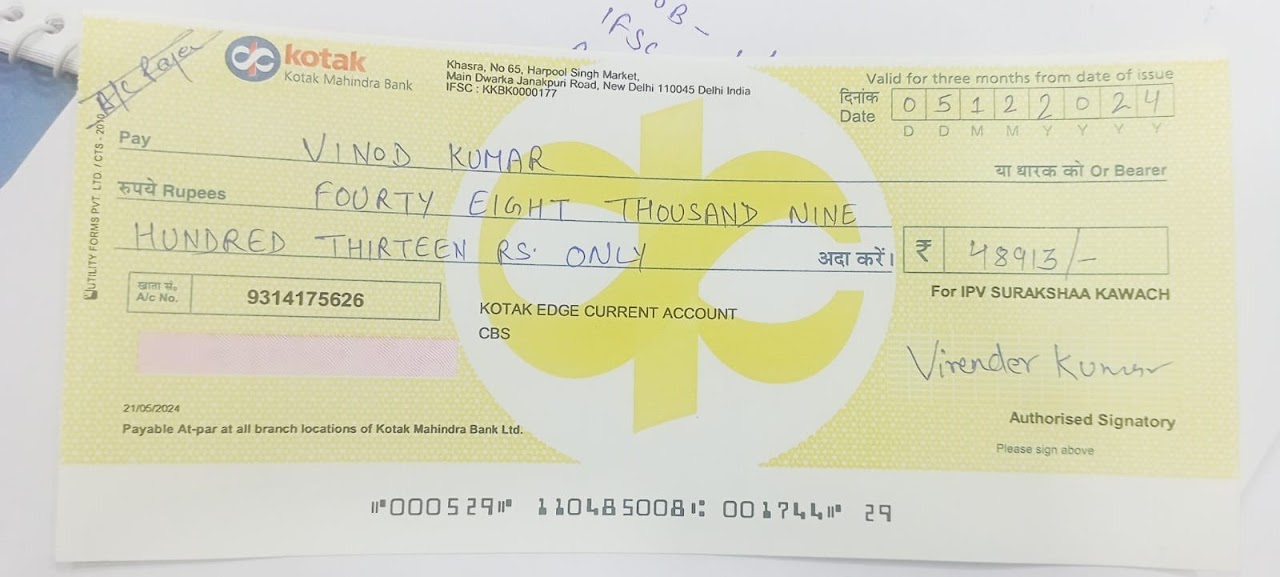
Executive Summary – IPAY
(Launched by IPV Surakshaa Kawach Charitable Trust, Reg. No. 2025/22/IV/1638)
About IPAY
IPAY is a complete Indian digital payment & compliance platform designed to empower individuals, merchants, and corporates with secure, fast, and GST-compliant financial transactions. Developed under the IPV Surakshaa Kawach Charitable Trust, IPAY integrates UPI, BBPS, GST Billing, and C2C/Merchant payments into a single ecosystem.
Vision
"हर भारतीय के लिए सुरक्षित और सरल डिजिटल भुगतान"
To make digital transactions seamless, transparent, and compliant for every Indian – from a student to a shopkeeper, from households to corporates.
Core Services
- C2C Payments – Wallet-based money transfer (send/receive/withdraw).
- Merchant Solutions – QR-based payments, GST-integrated billing, instant settlements.
- BBPS Utility Payments – Electricity, Gas, DTH, EMI, Insurance, Recharges.
- Compliance & Reporting – Auto GST filing, tax reports, audit-ready dashboards.
- Corporate Solutions (Phase 4) – Payroll, vendor payouts, bulk disbursements.
Market Opportunity
- India’s digital payment market is projected to cross $200 billion by 2030.
- UPI dominance (65% share) ensures growth scope.
- Gap in market: Payment + GST + Compliance + Trust-backed CSR model – IPAY uniquely addresses it.
Budget (Year 1 – MVP Launch)
- Development & Security: ₹2.4 Crore
- Compliance & Licensing: ₹50 Lakh
- Operations & Team: ₹1 Crore
- Marketing & CSR-based Branding: ₹70 Lakh
📌 Total Investment Needed: ₹4.6 Crore
Revenue Streams
- Merchant transaction fees.
- Subscription for GST compliance tools.
- Commission on BBPS services (bills, recharges, EMI).
- Premium wallet services.
Launch Roadmap (24 Months)
- Phase 1: C2C Wallet & Payments (6 months).
- Phase 2: Merchant & GST Billing (12 months).
- Phase 3: BBPS + Utility Ecosystem (18 months).
- Phase 4: Corporate Services + Advanced Compliance (24 months).
Impact & CSR Edge
IPAY will not only simplify digital transactions but also generate employment, support MSMEs, and promote financial literacy. Being backed by a charitable trust, IPAY ensures profit-with-purpose – revenue is reinvested in social upliftment projects.
📞 Contact: IPV Surakshaa Kawach Charitable Trust
📲 +91-9654379155 | 🌐 www.ipvsurakshaakawach.com
IPay — Project Report
Owner / Sponsor: IPV Surakshaa Kawach Charitable Trust (Reg. No. 2025/22/IV/1638)
Product name: IPay Control (Web + Mobile)
Purpose: PAN-India digital payment platform offering BBPS bill-pay, P2P pay-in/pay-out, merchant receiving, and integrated billing software with GST invoicing/compliance (merchant GST number).
Contact: IPV Surakshaa Kawach Charitable Trust
1. Executive summary (one-paragraph)
IPAY is a secure, RBI-compliant payments platform (web + mobile) built to serve consumers and merchants across India. Core services: Bharat Bill Payment System (BBPS) integration for utility/recurring bills, customer-to-customer (P2P) pay-in/pay-out, merchant payment acceptance (QR, card, UPI via partners), and a billing module for merchants that generates GST-compliant invoices and automates GST deduction/recording against merchant GSTIN. The platform targets NBFCs, MSMEs and urban/rural households and is designed as a regulated, partner-centric fintech that leverages bank/NPCI partnerships rather than trying to build issuer infrastructure in-house.
2. Services & features (product scope)
Customer-facing (web + mobile)
- BBPS bill payment: Pay utility bills, municipal/insurance/education bills through integrated BBPS aggregator. (Bill search, scheduled payments, receipts).
- P2P Pay-in / Pay-out: Instant UPI and bank transfers for pay-in (top-up wallet/bank transfers) and pay-out (send money to contacts/bank accounts via partner rails).
- Merchant payments: Merchant acceptance — QR (UPI QR + Bharat QR), card acceptance (via acquiring partner), and checkout APIs for e-commerce.
- User wallets & reconciliations: Optional escrow/settlement accounts for pay-ins and pay-outs (via partner bank).
- KYC / on boarding: Aadhaar / PAN / OTP KYC flows (partnered KYC provider).
- Security & fraud controls: 2FA, device risk scoring, transaction limits, real-time monitoring (RBI & PCI-DSS aligned).
Merchant-facing (web dashboard & billing software)
- Billing software (SaaS): POS/invoicing system that:
- Issue GST-compliant invoices (includes merchant GSTIN in invoice header).
- Supports auto-GST calculation, reverse charge flags and e-invoice generation where applicable.
- Tracks GST collected and outputs GST returns summary for accountant/export.
- Complaint/ticketing module linked to payment disputes.
- Settlement & payout management: Daily/weekly settlement cycles with bank/acquirer; merchant dashboard for reconciliation.
- Complaint & dispute management: Track customer complaints tied to transaction IDs and merchant GSTIN (for audit trail).
3. Market analysis (summary + key data points)
Market opportunity (India)
- India’s digital payments are massive and still growing fast — digital payments value ran into the tens of trillions of INR and transaction volumes are expanding rapidly; UPI and instant payments dominate retail flows. This creates a strong addressable market for platforms offering convenience + bill payments + merchant acceptance.
- Bharat BillPay (BBPS) and related govt-backed bill payment networks have been expanding scope and transaction volumes — integrating BBPS is strategic for recurring revenue and customer stickiness.
Why IPAY Control?
- Consumers prefer unified bill pay + wallets + merchant payments in one app. BBPS integration drives repeated usage.
- MSMEs need simple GST-aware billing + easy payment acceptance; combining billing+payments eases reconciliation and compliance (value proposition for merchant subscriptions).
- Regulatory trend: RBI & GSTN updates increase demand for compliant platforms that can offload compliance burdens for merchants.
Target segments
- Urban + semi-urban consumers (monthly bill pay, P2P).
- MSME merchants (retail, kirana, clinics, tuition centers) needing payments + GST-aware billing.
- NBFCs/Bank partners seeking channel reach for lending + collection.
(Sources used for market sizing and trend guidance: industry payments reports and BBPS/UPI statistics).
4. Regulatory & compliance overview (must-do)
- RBI rules: follow NPCI/RBI modes for UPI/IMPS/NEFT rails; partner with bank(s)/payment aggregators/acquirers rather than onboard direct clearing member status initially. New RBI security authentication guidance (stronger 2FA mandates) are in flux — plan architecture to support advanced 2FA.
- BBPS membership: integrate via BBPS aggregator or become a Bharat Bill Payments Operating Unit (BBPOU) partner through an authorized aggregator/agent.
- PCI-DSS: card data handling must meet PCI-DSS if storing/transmitting card data. Prefer tokenisation via acquiring partner to reduce scope.
- KYC / AML: comply with KYC/KYB (merchant) and AML transaction monitoring per PMLA and RBI norms.
- GST & e-invoicing: billing software must support GST-compliant invoices; e-invoice rules apply above turnover thresholds (check current threshold — applicability has been evolving; platforms should support e-invoice generation/IRN where required).
5. Technology & integrations (high level)
- Frontend: React (web), React Native or native Swift/Kotlin (mobile).
- Backend: Node.js / Java / Python microservices; PostgreSQL (or cloud managed DB); Kafka for eventing.
- Payments & rails: Integrate with bank partners, acquirers (for cards), UPI PSPs via partner, and BBPS aggregator API. Tokenize card data via PSP.
- Billing & GST: implement GST calculator, HSN/SAC mapping, GSTIN validation (GSTN APIs), and e-invoice generation support (IRP integration via third-party e-invoicing API).
- Compliance & security: PCI-DSS readiness, SOC-2 style controls, RBI mandated security posture, encryption, SIEM, 2FA.
6. Business model & revenue streams
- Transaction fee (B2C/B2M): small convenience fee or percentage per transaction (merchant discount rate negotiated with acquirer; platform margin on top for value-added services).
- BBPS commissions: biller commission split for BBPS transactions.
- Merchant subscription: billing software SaaS subscription (monthly/yearly) — basic free tier, paid premium with GST automation & reconciliation.
- Value-added services: cash flow loans (in partnership with NBFCs), working capital referral fees, analytics reports, SMS/IVR charges.
- Adoption incentives: merchant onboarding fees? (consider waived or low for initial rollout).
7. Go-to-market & partnerships
- Partnerships required: Banks (settlement & bank accounts), acquiring banks / PGs, BBPS aggregator/BBPOU partner, KYC provider, e-invoicing API provider, cloud provider.
- Channels: Onboarding team for MSMEs, digital marketing for consumers, tie-ups with local business associations, referral incentives.
- Customer support: 24×7 ticketing and escalation, dispute resolution SLA for payments.
8. Risk analysis & mitigations
- Regulatory change risk (RBI/NPCI): keep legal counsel; build flexible architecture to adapt (e.g., support new 2FA).
- Compliance burden (GST/e-invoicing): integrate e-invoice & GSTN-compatible flows; educate merchants.
- Competition: UPI/large wallets dominate — differentiation via BBPS + GST billing + MSME focus.
- Operational risk: fraud, chargebacks — implement strong risk engine and partner tokenization.
9. Implementation roadmap (high level)
Phase 0 — Planning & partnerships (0–2 months)
- Finalize bank/acquirer partnerships, BBPS aggregator partner, KYC provider, legal & compliance checklist.
- Phase 1 — MVP (3–6 months)
- Core features: User registration/KYC, UPI pay-in via partner, BBPS bill pay via aggregator, merchant onboarding (QR). Minimal billing module (GST calc + invoice PDF).
Phase 2 — Expand features (6–12 months) - Full billing SaaS (GST e-invoice export), card acceptance (via acquirer), settlements, reconciliation, complaint module.
- Phase 3 — Scale & value add (12–24 months)
- Analytics for merchants, lending partnerships, multi-language rollout, rural agent network.
10. Budget & financials — realistic estimates (INR, rounded)
Sources & assumptions: fintech / app development cost ranges from industry 2025 surveys and guides. I used mid-2024/2025 industry figures for app development and fintech build-cost estimates as baseline, and adjusted to INR. These are estimates — actuals depend on scope, vendor, and partner fees.
A. One-time (CapEx) — MVP (conservative / India-market)
- Product & app development (MVP web + mobile + backend) — ₹40–80 lakh
- (includes UI/UX, frontend, backend APIs, admin dashboard, basic reporting).
- BBPS & payments integration (aggregator & PSP onboarding fees) — ₹6–12 lakh (integration, sandbox, certification)
- PCI-DSS gap-analysis & initial compliance preparation — ₹3–6 lakh
- Legal, licensing, KYC integration & compliance setup — ₹3–6 lakh
- Cloud infra & environment setup (first year) — ₹2–6 lakh
- Branding, minimal marketing collateral for launch — ₹2–4 lakh
- Contingency (10%) — ₹6–11 lakh
Estimated MVP CapEx total: ₹62 lakh – ₹1.25 crore (≈ ₹0.62M – ₹1.25M)
B. Annual operating expense (OpEx) — Year 1 (approx)
- Salaries / Core team (CTO/PM/2–3 devs/QA/ops/support) — ₹35–60 lakh
- Cloud hosting & SRE / monitoring — ₹3–8 lakh
- KYC & payment processor per-txn fees (variable) — depends on volumes (assume ₹0.5–2 per transaction or PSP percentage).
- Customer support & field onboarding — ₹8–15 lakh
- Marketing & merchant acquisition — ₹10–30 lakh
- Compliance & audit (PCI, security, legal) — ₹3–6 lakh
- Misc/office/insurance — ₹2–5 lakh
Estimated Year-1 OpEx: ₹61 lakh – ₹1.24 crore
Total Year-1 (CapEx + OpEx): ~₹1.23 crore – ₹2.49 crore (wide band reflecting vendor & scope variation).
C. Scale / Enterprise build (12–24 months) — if you want full feature set + heavy scale
- Expanded product, additional senior hires, full PCI-DSS + SOC audits, intensive marketing, agent network: ₹3.5 crore – ₹8 crore (projected CAPEX + Year-2 OpEx) depending on growth targets and transaction volumes.
11. Revenue example (simple projection & assumptions)
- Assumptions (illustrative): month 1 start, scale to 50k transactions/month in Year-1, avg platform fee ₹2 per transaction (net), merchant SaaS ₹1,000/month per 200 merchants by Year-1.
- Monthly revenue (approx): transaction fees 50k×₹2 = ₹1 Lakh; merchant SaaS (200×₹1,000) = ₹2 Lakh → ₹3 Lakh/month → ₹36 Lakh/year.
- Notes: real revenues depend on BBPS commission share, merchant take rate, loan/referral fees, and adoptions. Break-even timeline typical for fintechs is 18–36 months depending on CAC.
12. Key success metrics
- GMV (Gross Merchandise Value) processed monthly (target scale metric).
- Active transactions per consumer monthly (stickiness).
- Merchant ARPU (SaaS + transactions).
- Cost per merchant acquisition (CPA) and customer CAC.
- Chargeback & fraud rates (should be minimal with KYC + 2FA).
13. Next steps / recommended immediate actions
- Confirm partner strategy (BBPS aggregator, acquiring bank, UPI PSP partner). This reduces regulatory burden and speeds time to market.
- RFP for development vendors (at least 3 Indian fintech app vendors) and validate technical proposals against budgets above. Use one vendor for MVP build (3–6 months).
- Hire compliance/legal advisor experienced in NPCI/RBI & GST/e-invoice landscape.
- Pilot launch in one city / region (e.g., Delhi NCR) targeting MSME merchants & recurring household billers to validate workflows and collections.
- Monitor regulatory updates (RBI/ NPCI) and confirm 2FA/strong auth changes into product plan.
14. Appendix — Key references (most load-bearing sources used)
- India payments & UPI growth context and transaction volumes — industry reports (payments 2024/2025).
- BBPS / Bharat BillPay expansion & relevance to recurring billing — payments trend report (Grant Thornton / BBPS circulars).
- Typical fintech / mobile app development cost ranges (2024–2025 industry guides) — used to estimate CapEx.
- GST e-invoicing applicability and compliance (e-invoice thresholds and rules) — used to scope billing/GST features.
- RBI security & authentication trend (2FA mandates evolving) — plan for strong 2FA & security architecture.
Final notes & candid observations
- The payment space in India is very large but also highly competitive (UPI/major wallets dominant). IPAY Control’s practical route to success is niche differentiation: focus on BBPS + merchant GST-aware billing and MSME pain points (reconciliation, GST compliance), and partner extensively with banks/aggregators rather than trying to displace incumbents.
- Budget bands given above are estimates anchored on recent industry surveys — actual quotes from vendors + partner onboarding fees will firm these numbers. If you want, I can:
- produce a detailed 3-year P&L (with conservative / base / aggressive scenarios), or
- draft an RFP template for vendor selection (MVP scope with acceptance criteria), or
- prepare a compliance checklist (NPCI, BBPS onboarding steps, sample legal documents) to start partner outreach.
12-Month Project Timeline & Hiring Plan
Scope: Payment Platform (BBPS + P2P payin/payout + Merchant payment receiving)
Budget mode: Lean startup with option to scale team in phases.
📅 Month-by-Month Timeline
Month 1–2: Foundation & Planning
- Finalize business model & partnerships (PA/Bank + BBPS aggregator).
- Legal, compliance, RBI advisory initiated.
- Hire Founding Tech Lead, Product Manager, Compliance Consultant.
- Tech stack selection (Web + Mobile).
Month 3–4: MVP Development Begins
- Backend architecture setup (Node.js / Java micro services).
- Start BBPS integration (via aggregator).
- Build Merchant dashboard (basic) & consumer app skeleton.
- Hire Backend Dev, Mobile Dev, UI/UX Designer.
- Security requirements scoping (PCI DSS, encryption).
Month 5–6: Core Integrations
- UPI merchant QR & intent integration.
- Payout APIs with bank partner.
- BBPS bill presentment flows completed.
- Launch Alpha test (internal).
- Hire QA Engineer, DevOps/Cloud Engineer.
Month 7: Alpha → Pilot
- Closed group pilot with 100 consumers + 10 merchants.
- Test flows: P2P, merchant receipts, bill pay.
- Initial fraud/risk engine rules in place.
- Marketing planning begins.
Month 8–9: Beta Expansion
- Merchant onboarding portal launch.
- Settlement dashboard, reconciliation module.
- Pilot with 1,000+ users, 100 merchants.
- Start customer support team (2 agents).
- Hire Marketing Executive, Operations Manager.
Month 10: Scale Up
- Introduce instant settlements (T+0 option).
